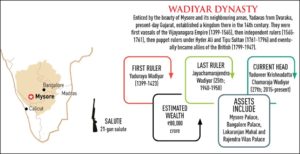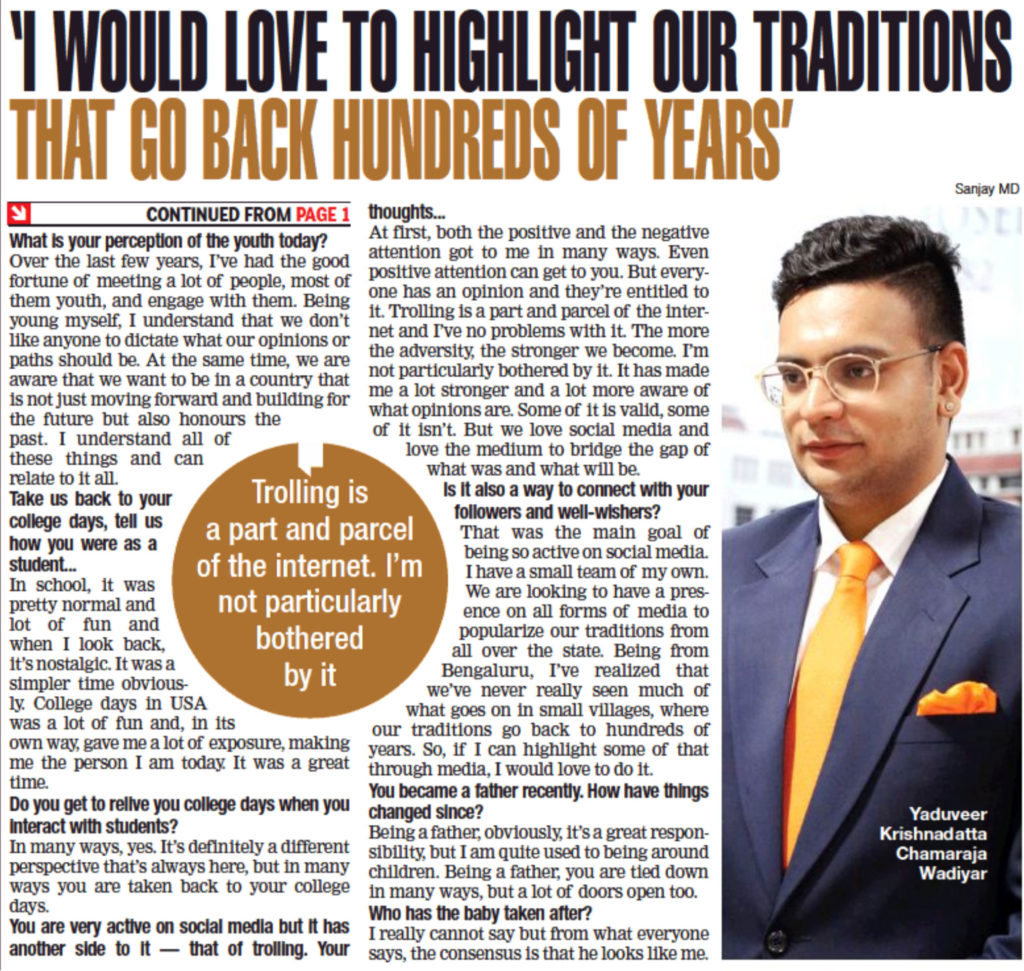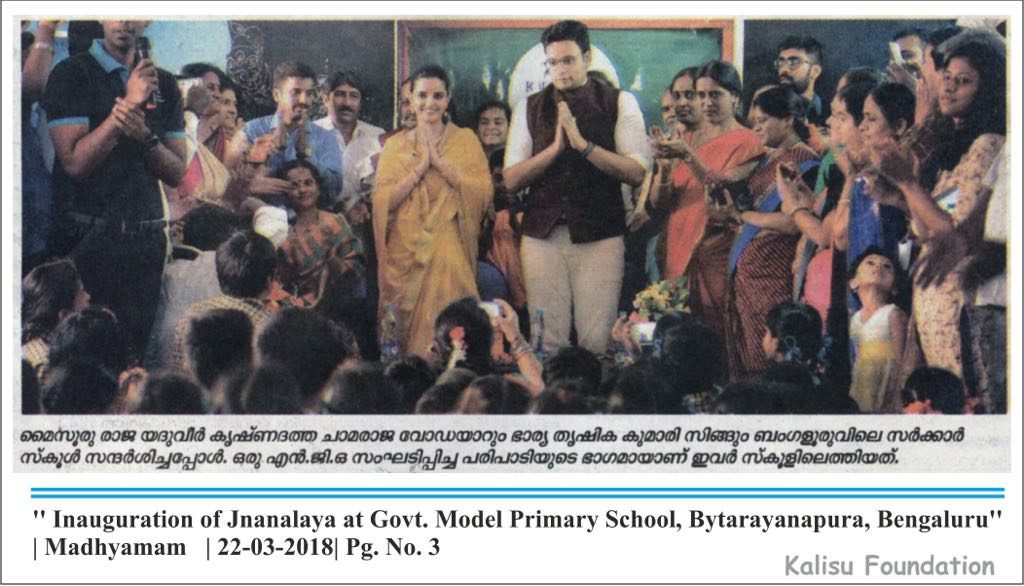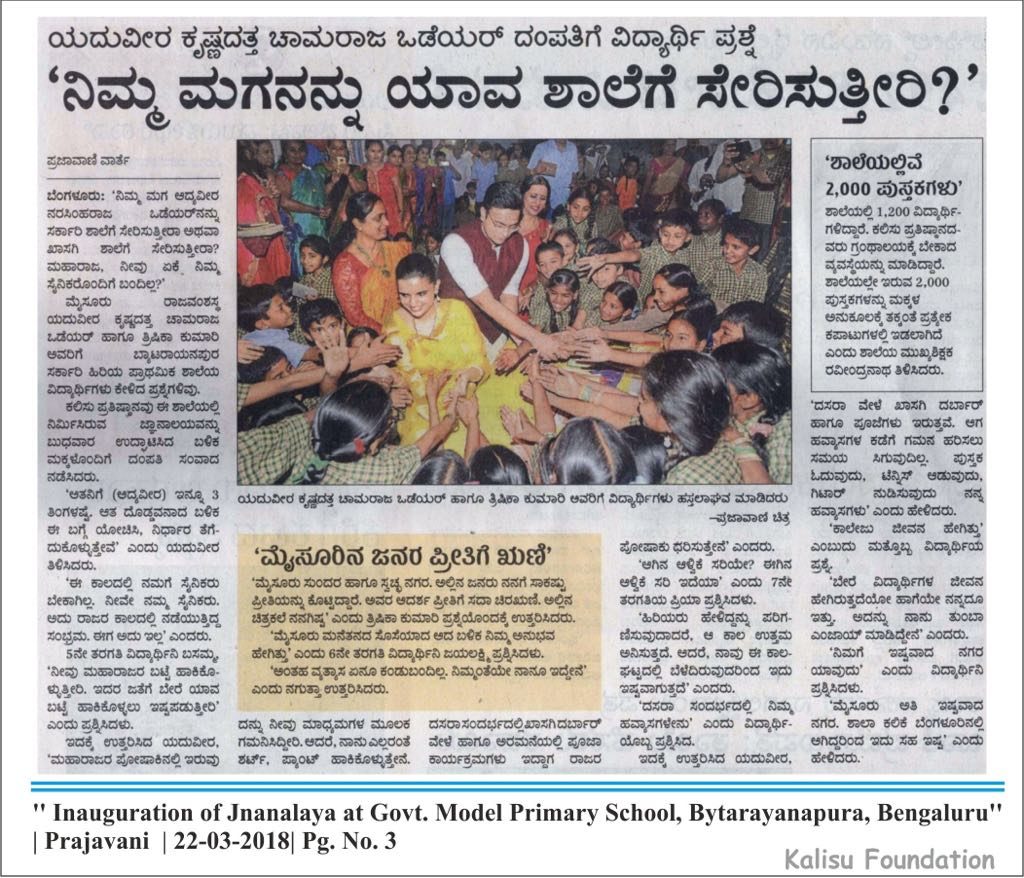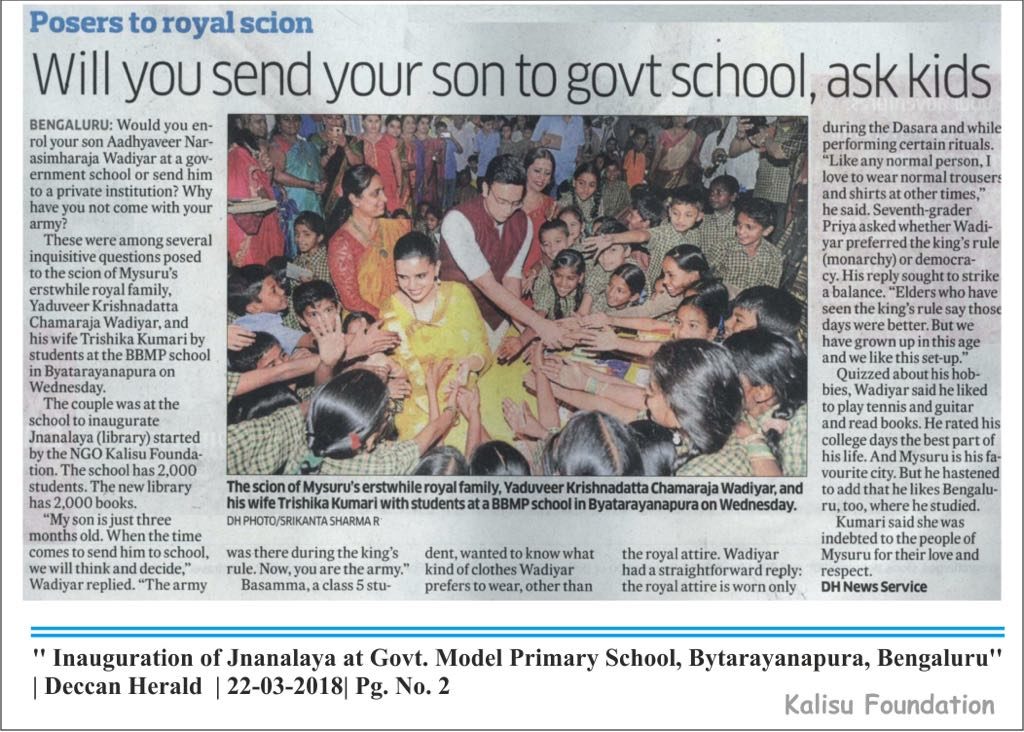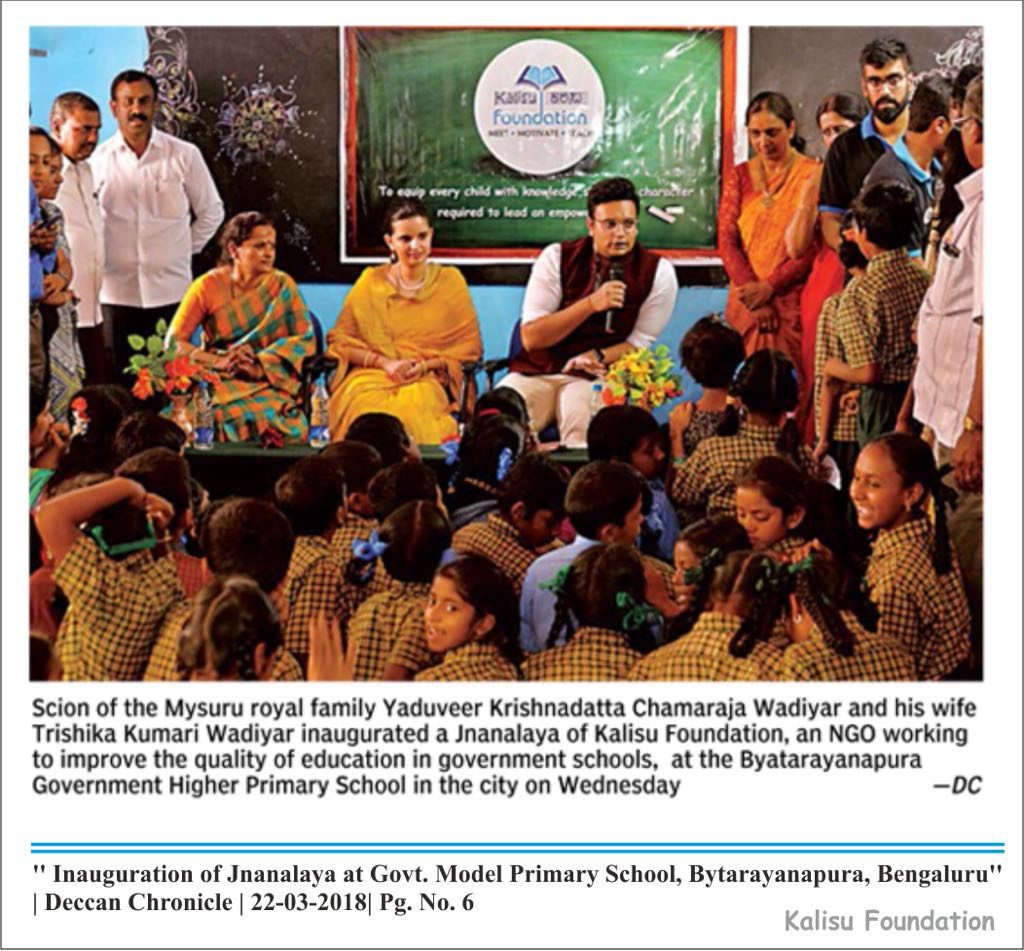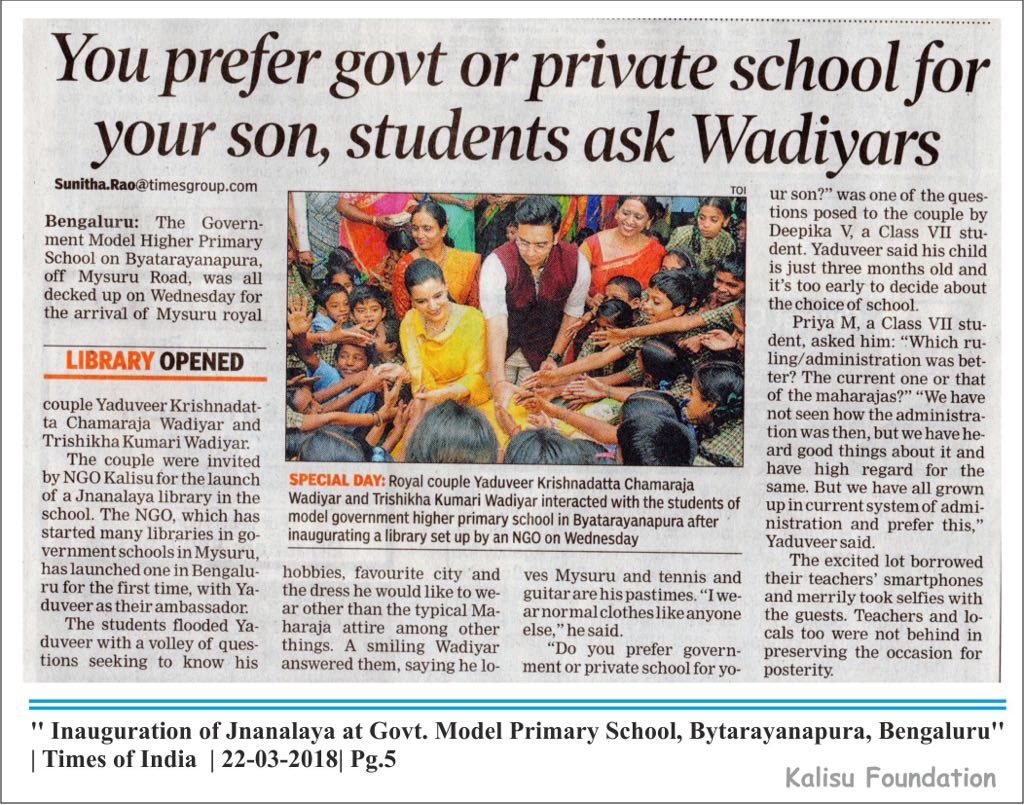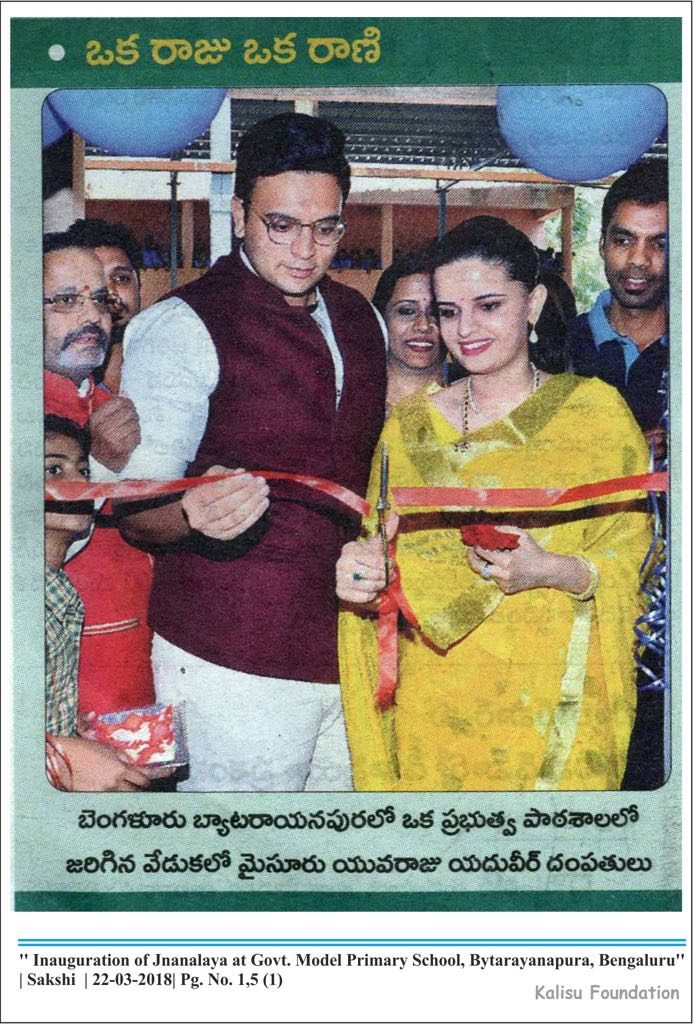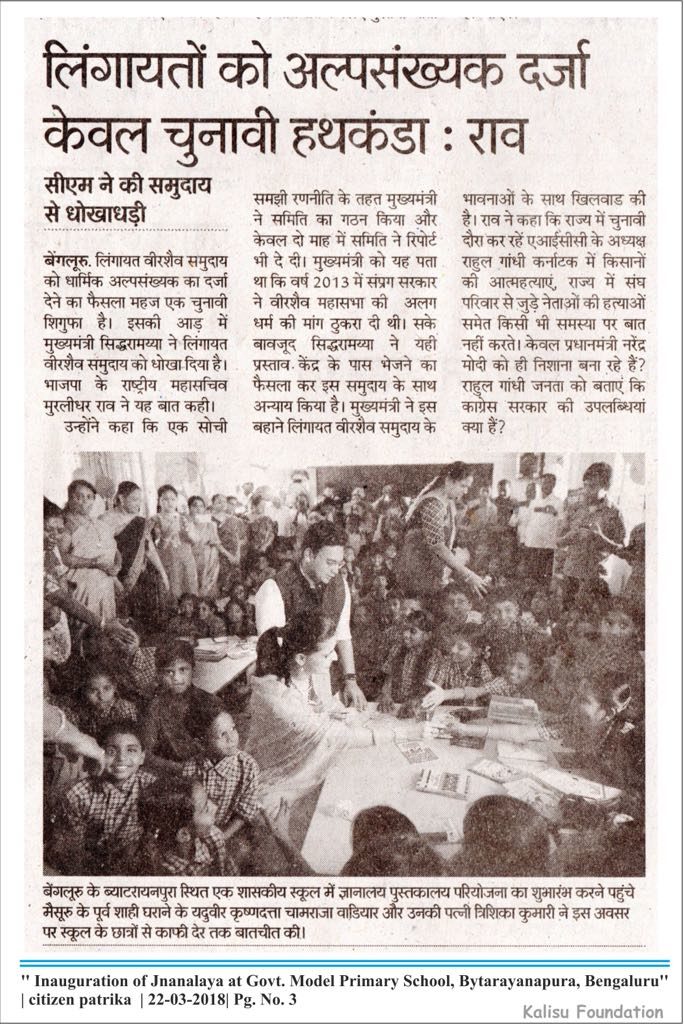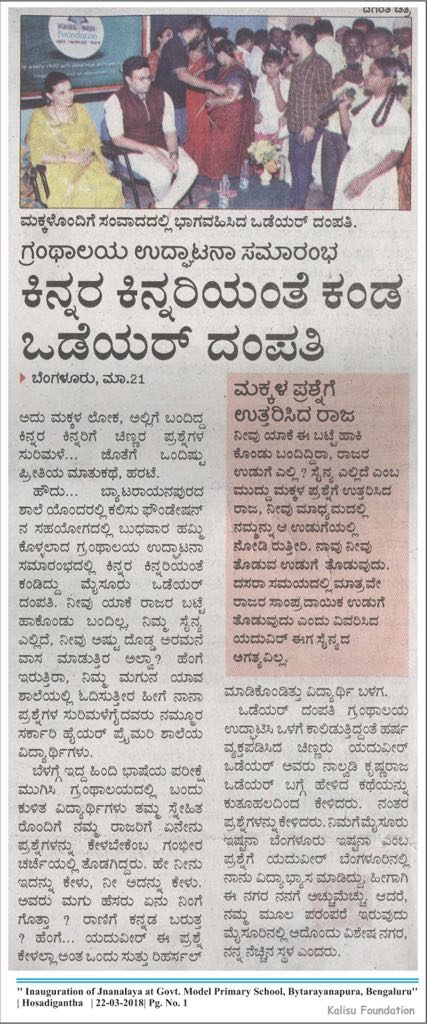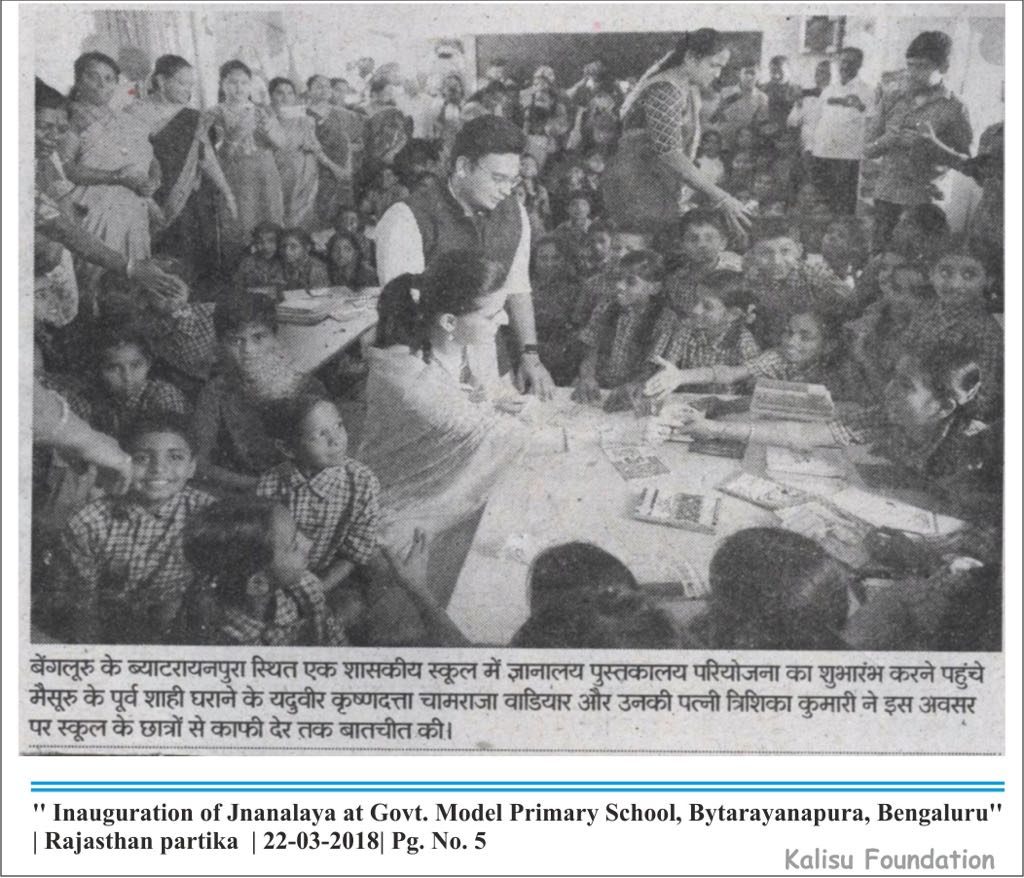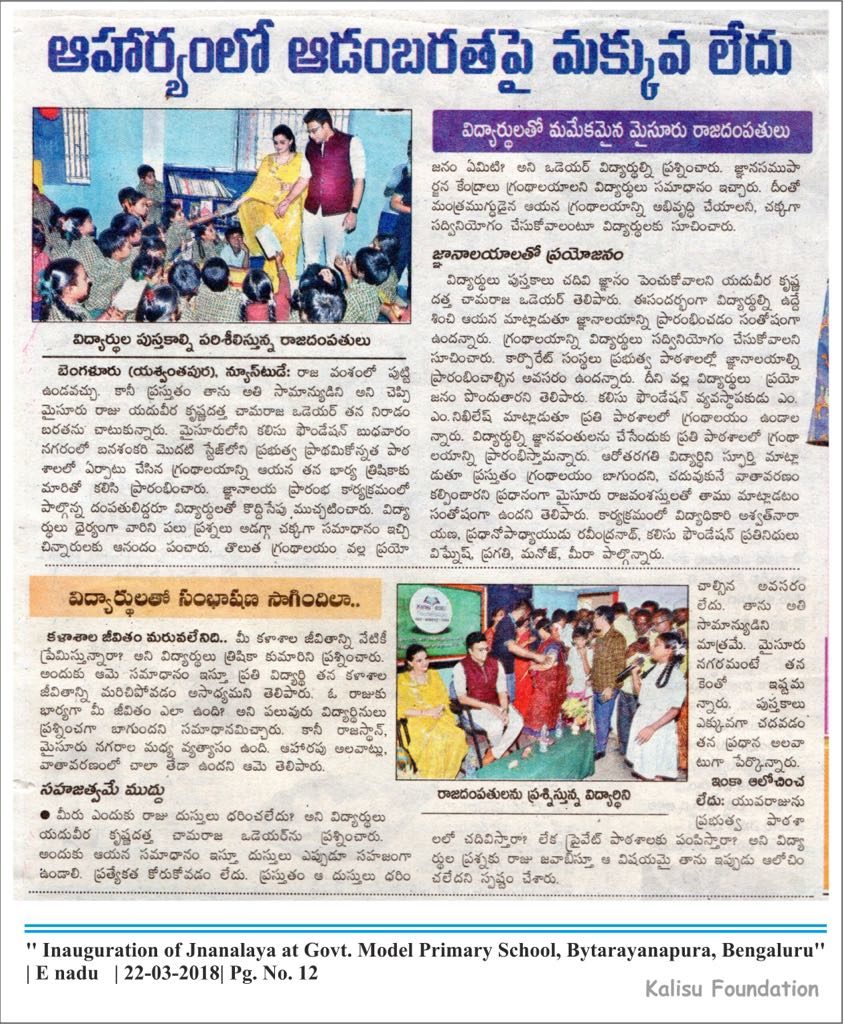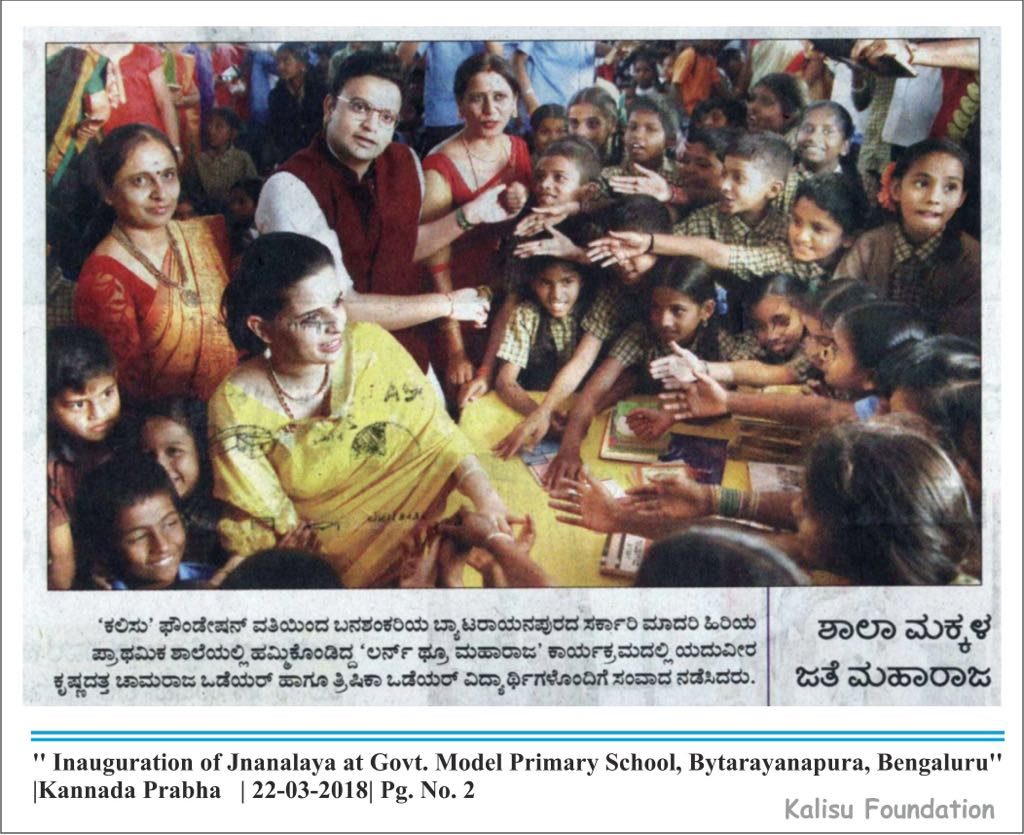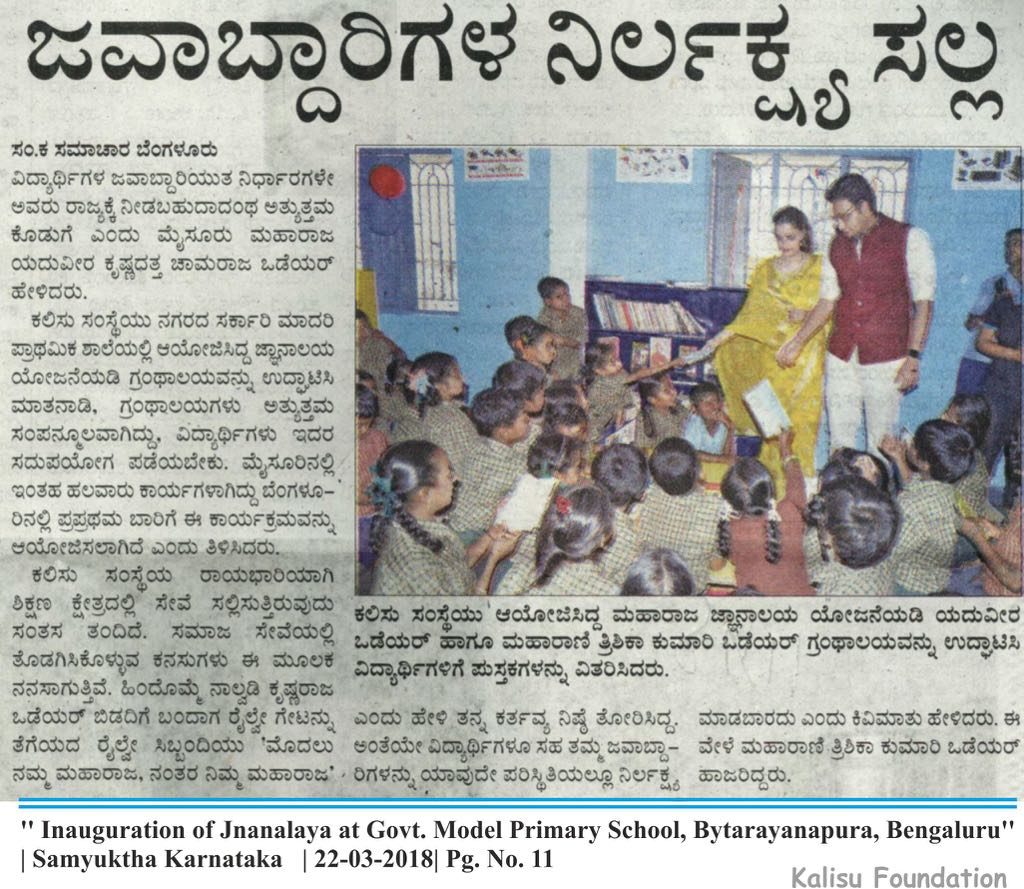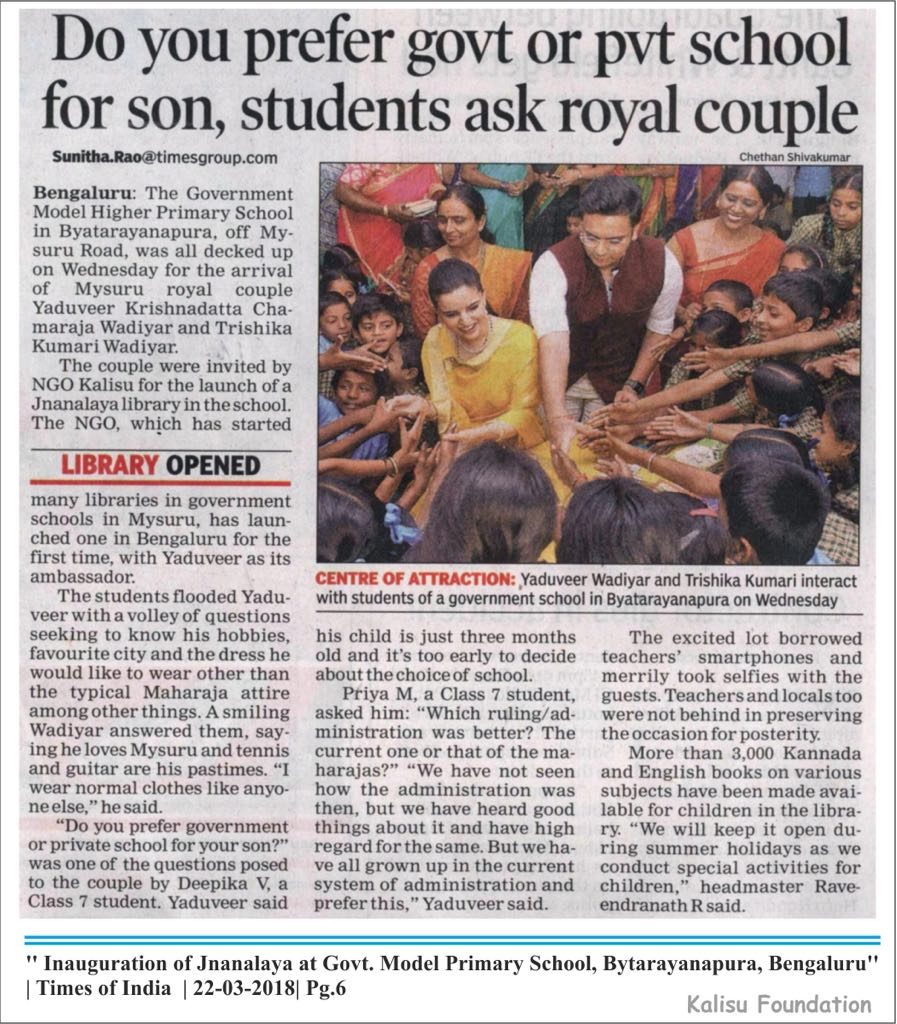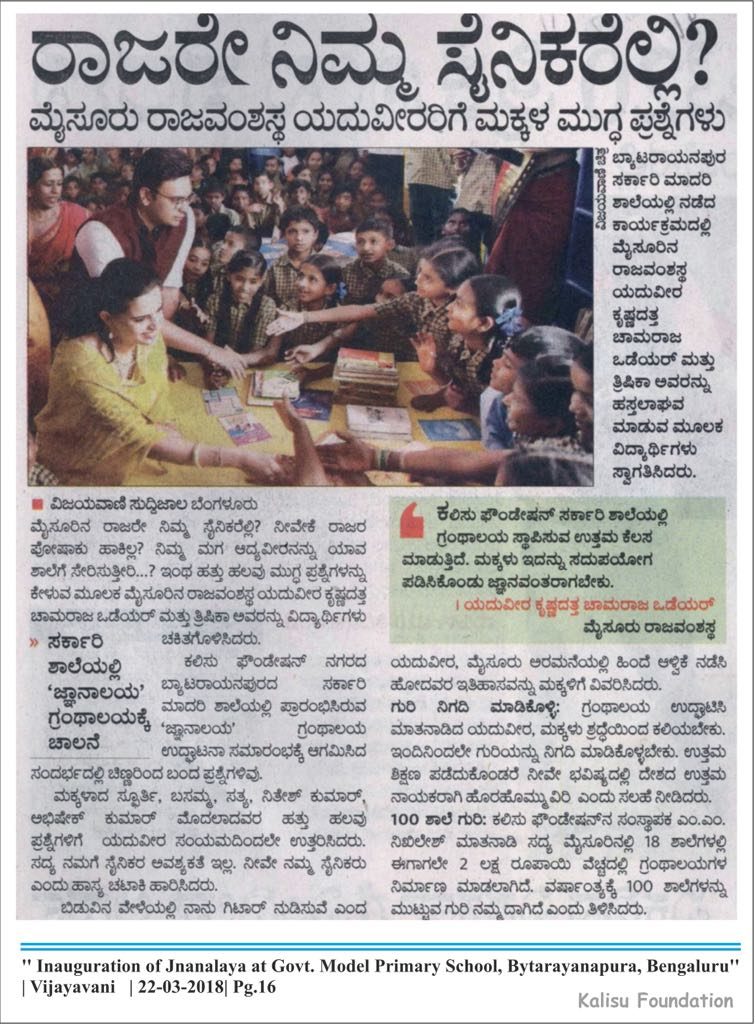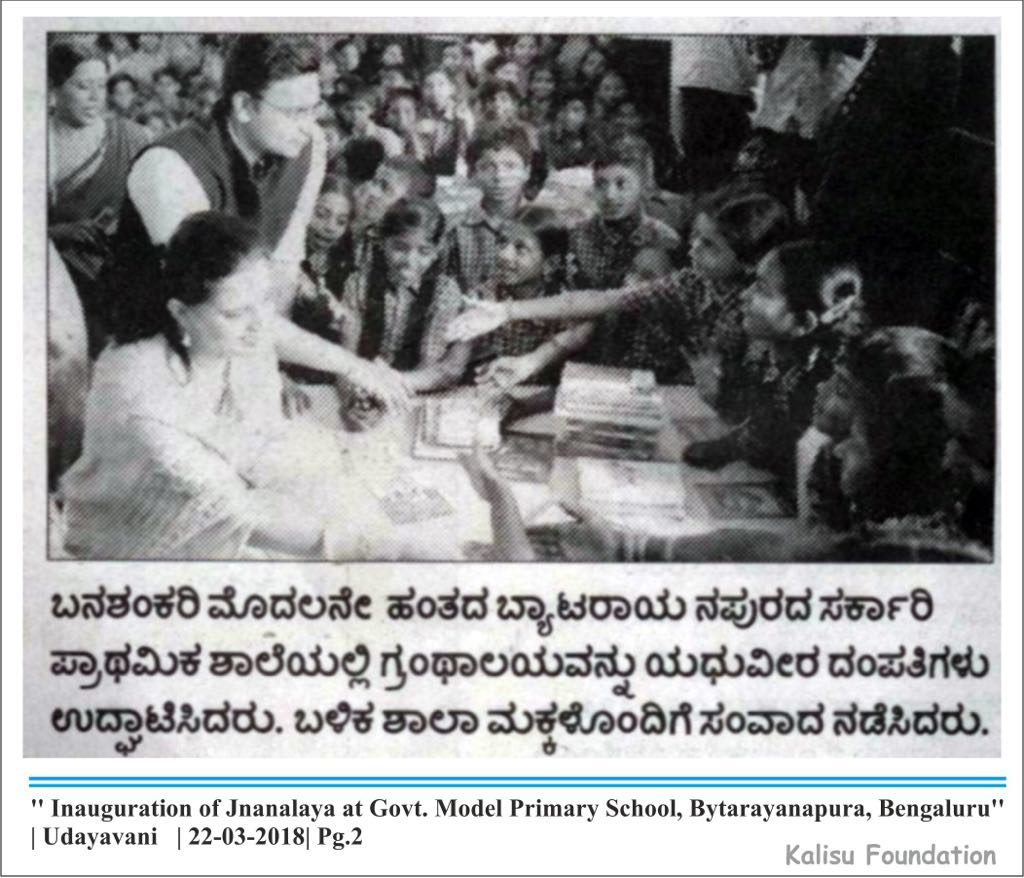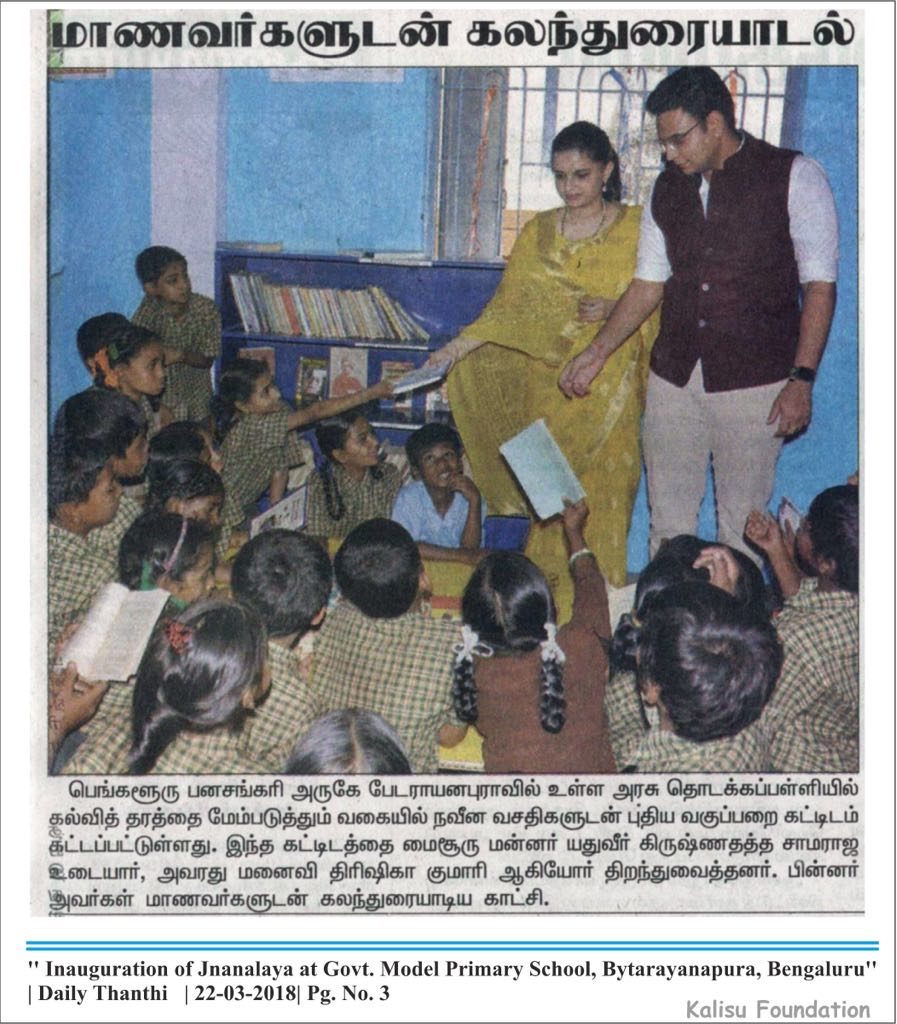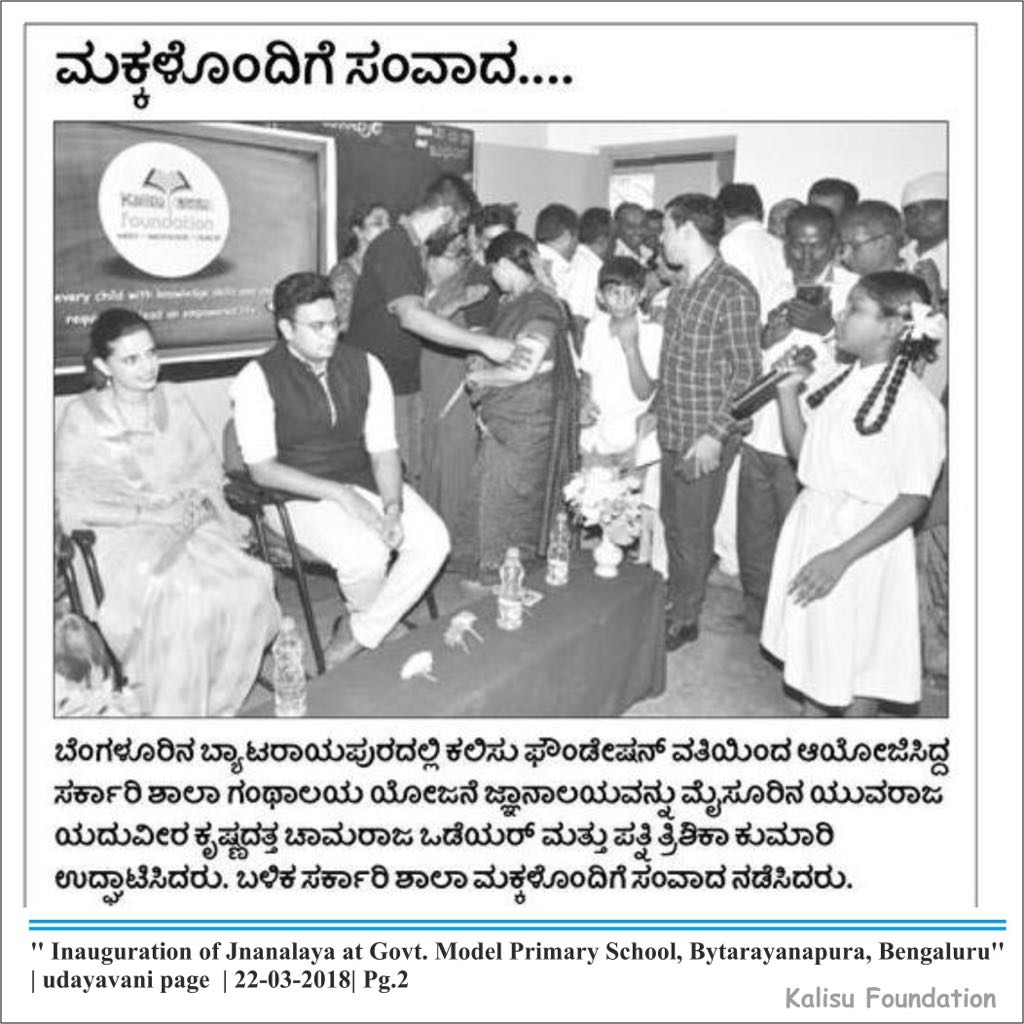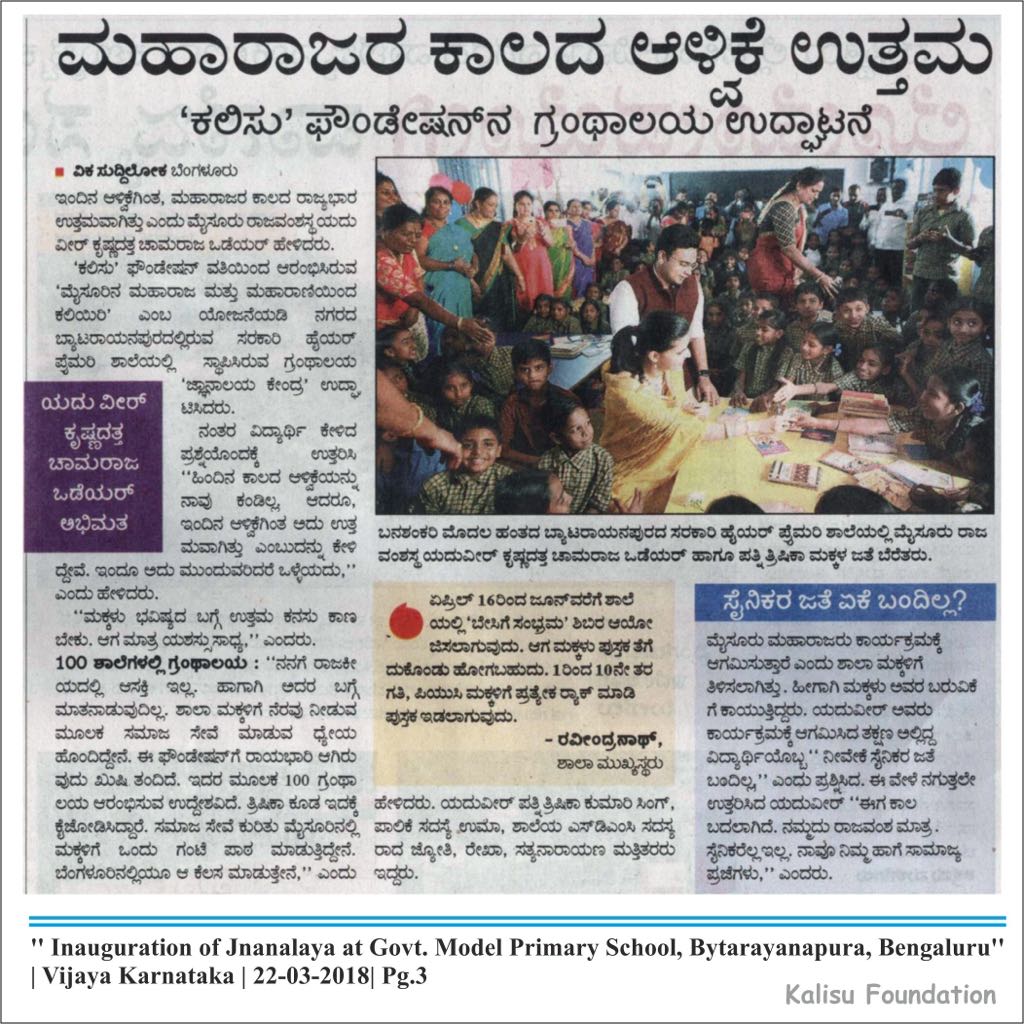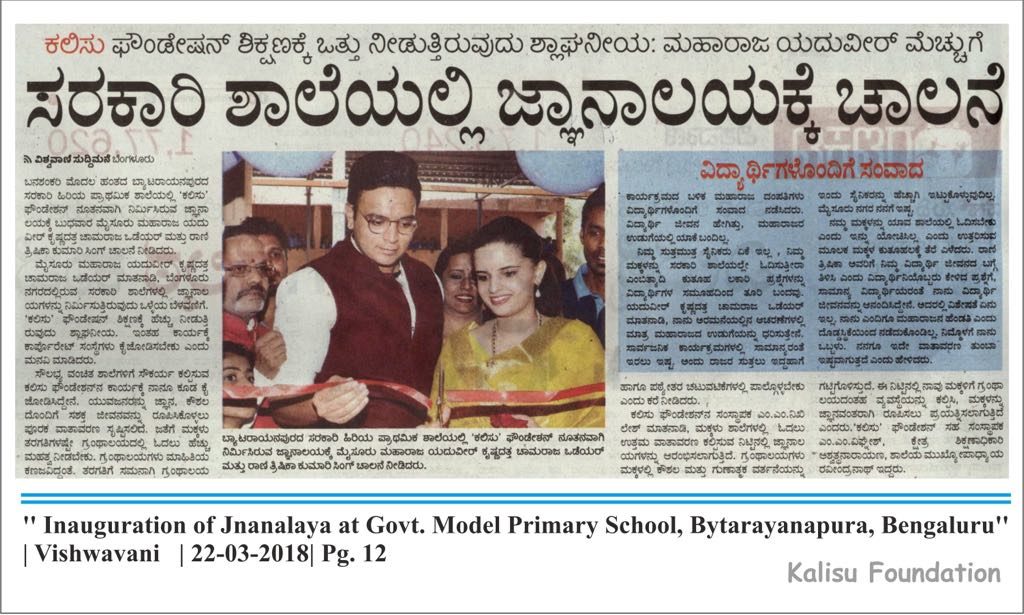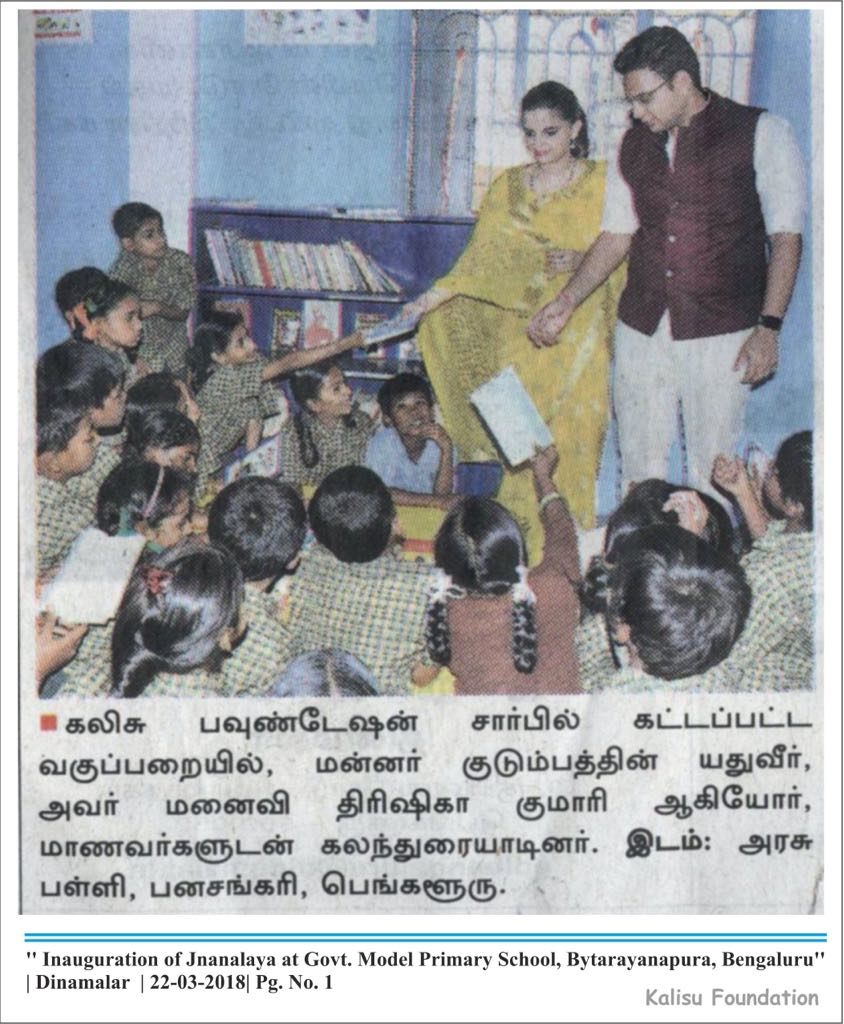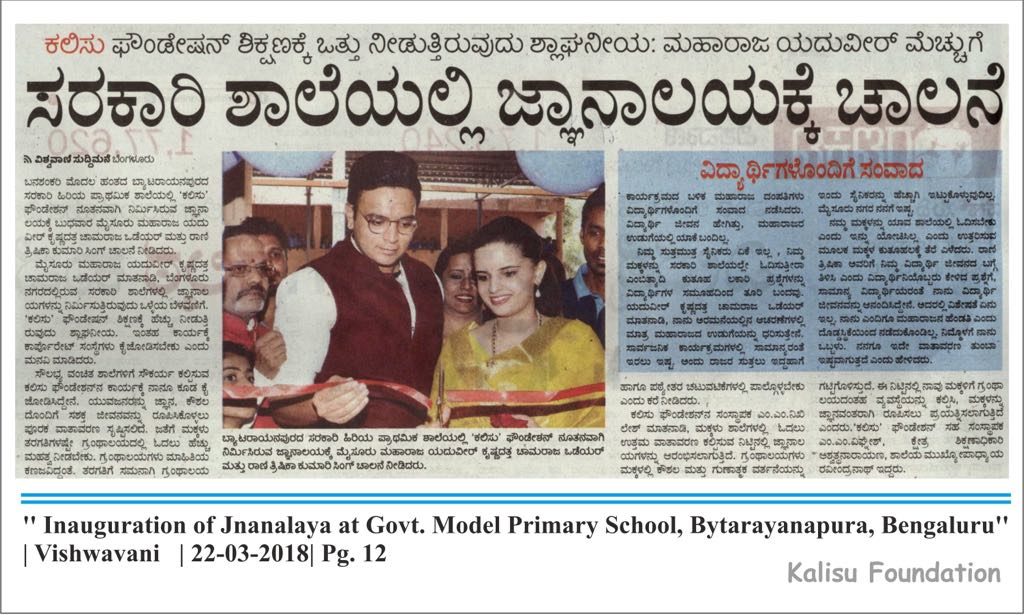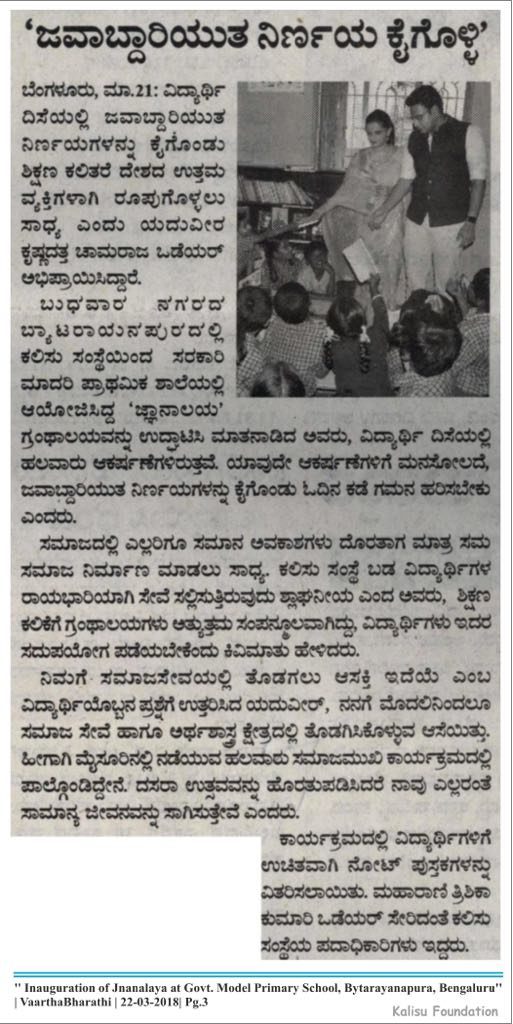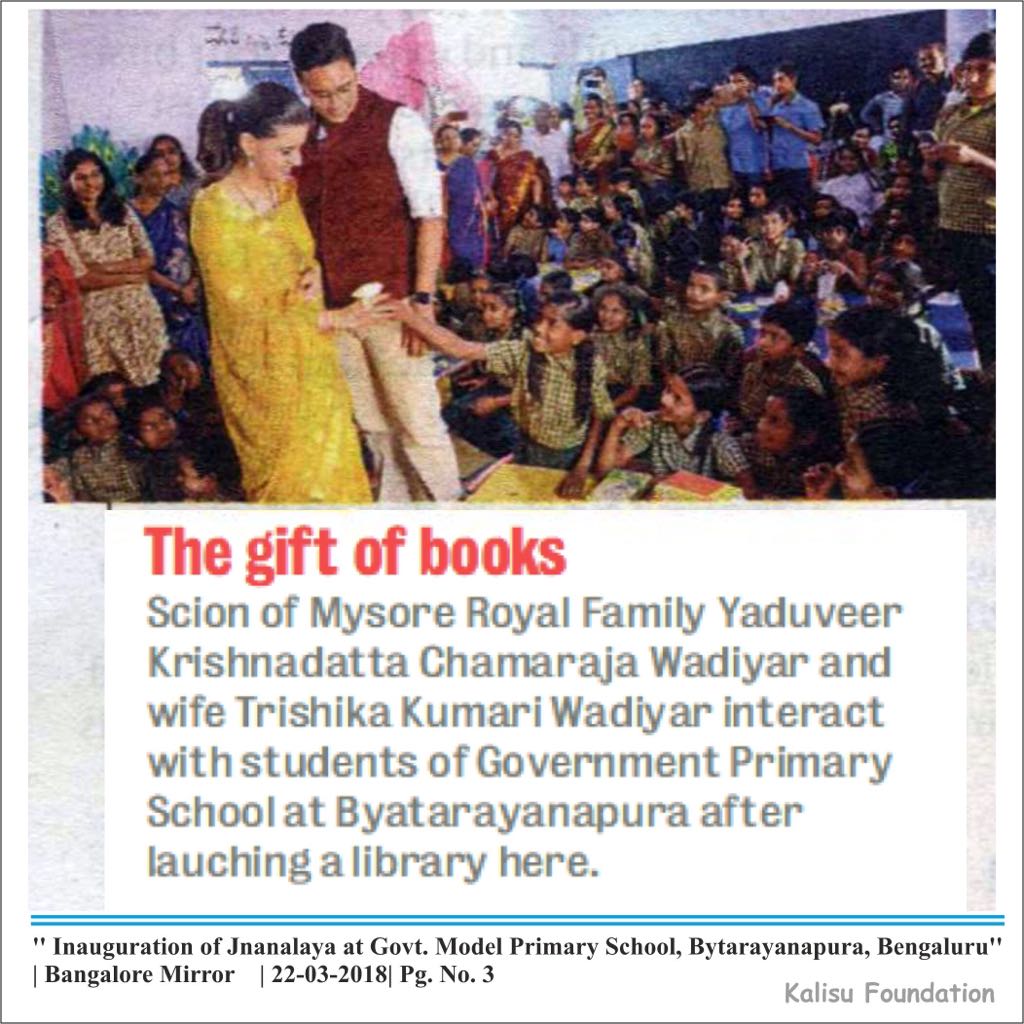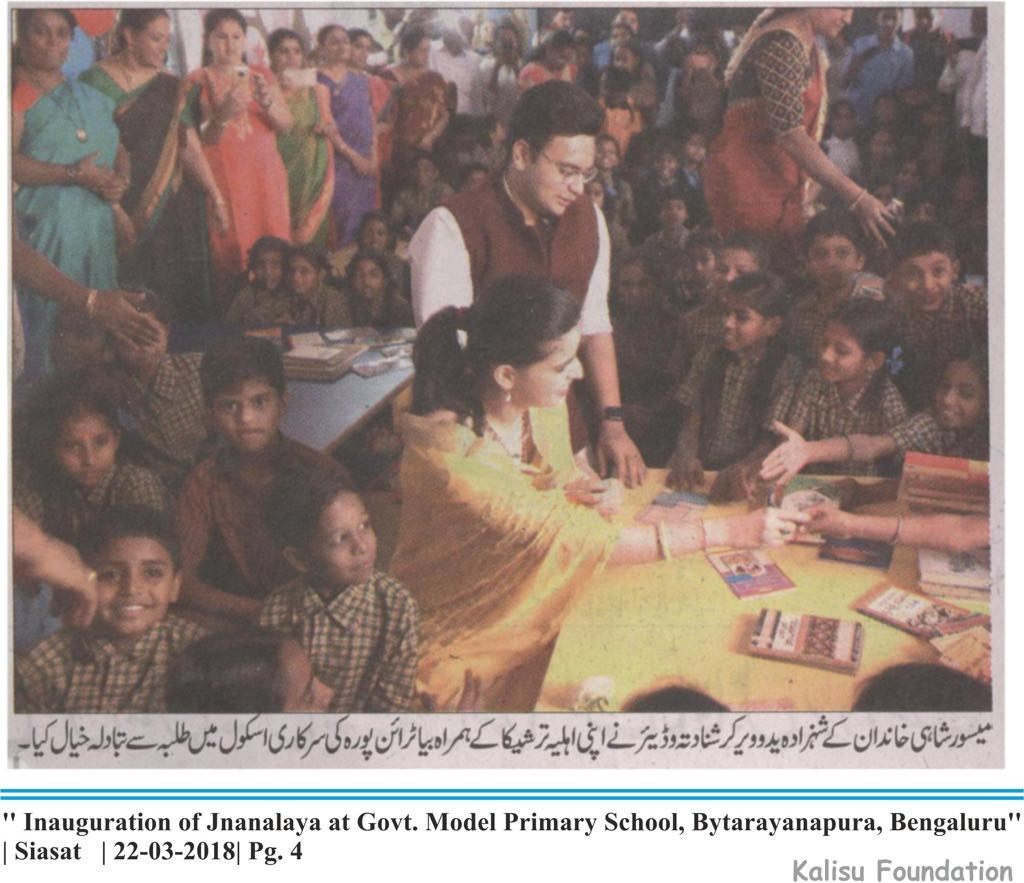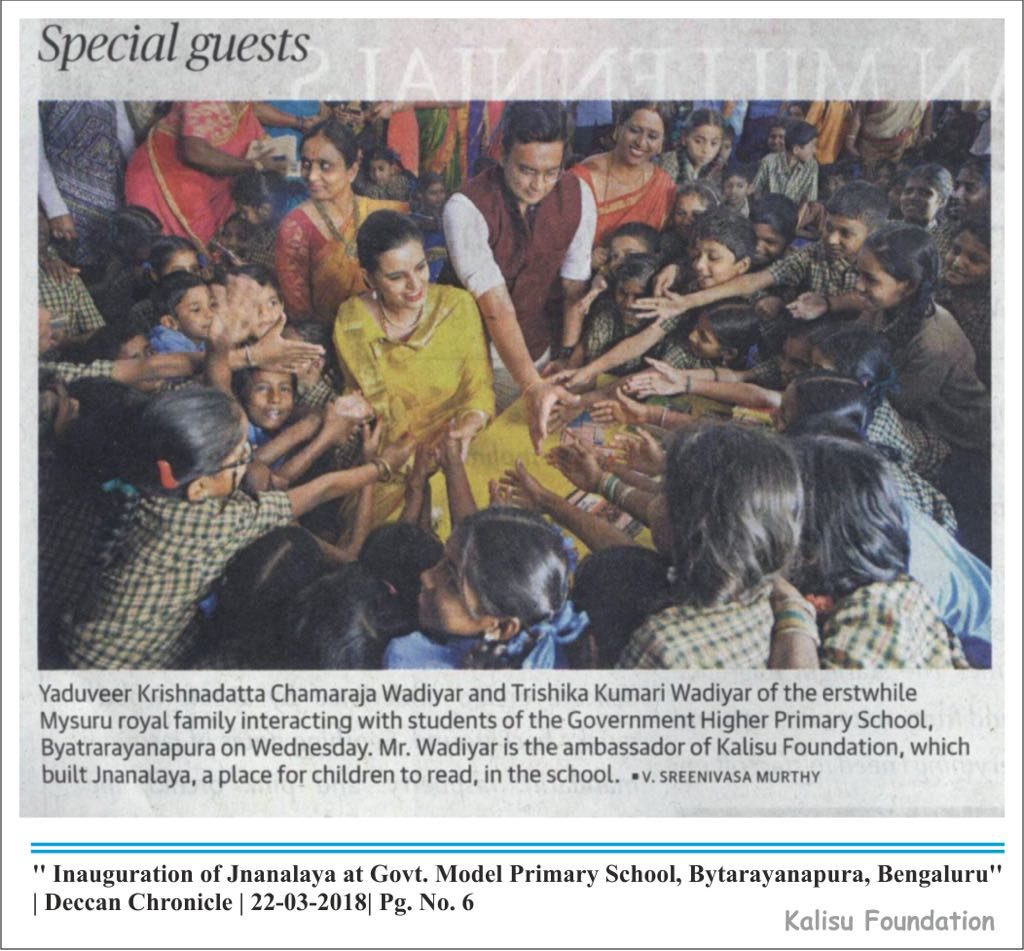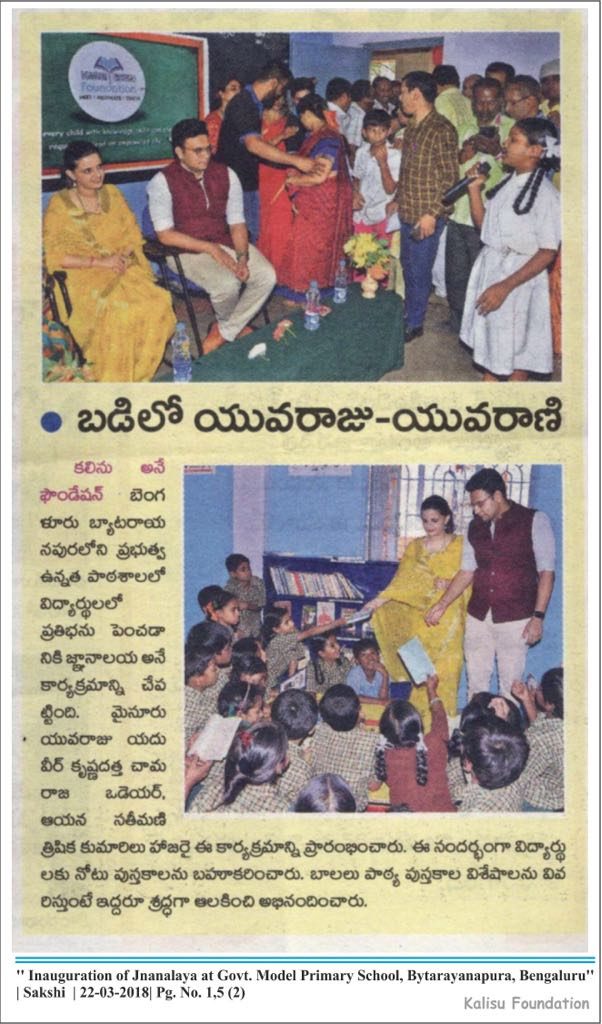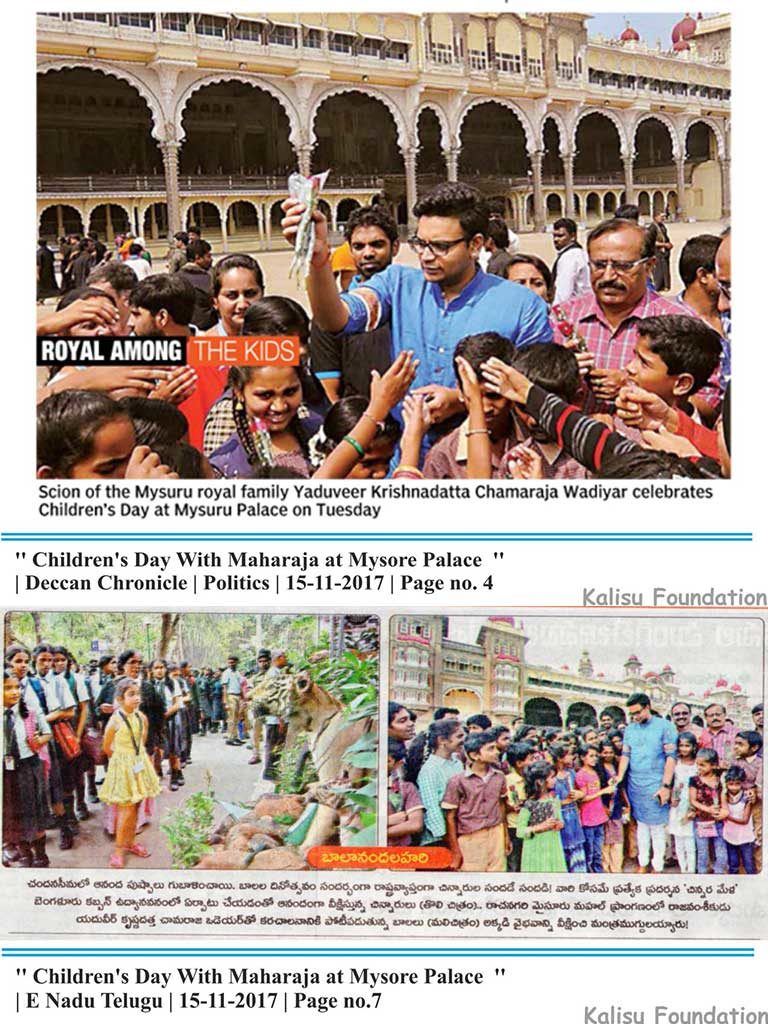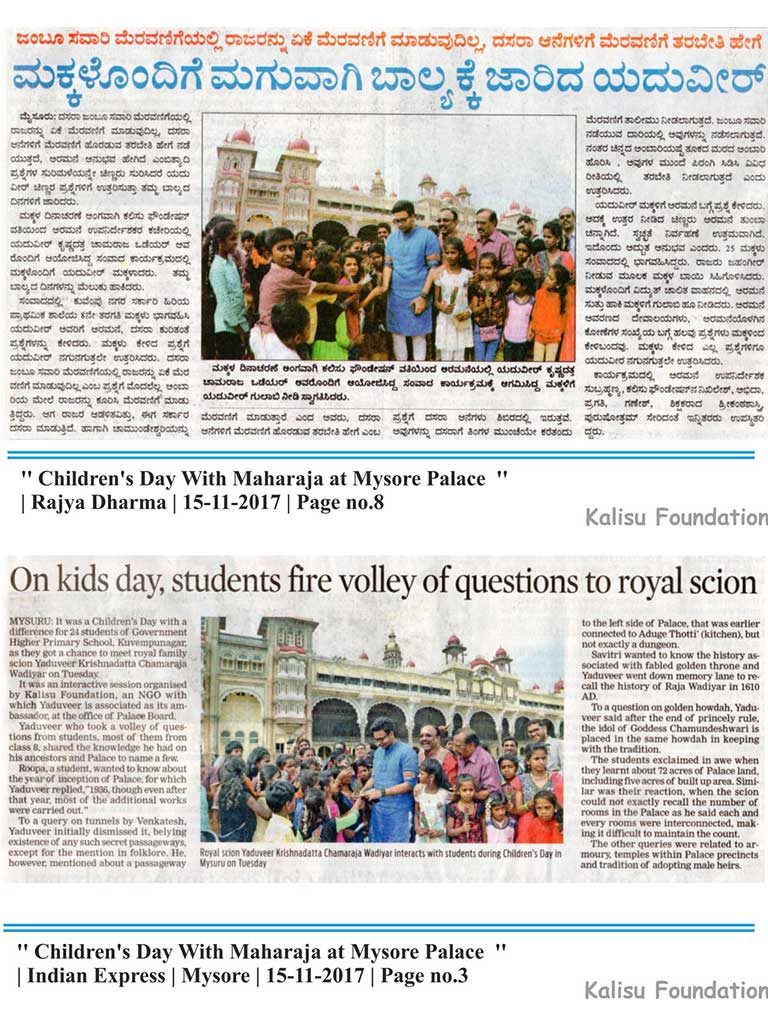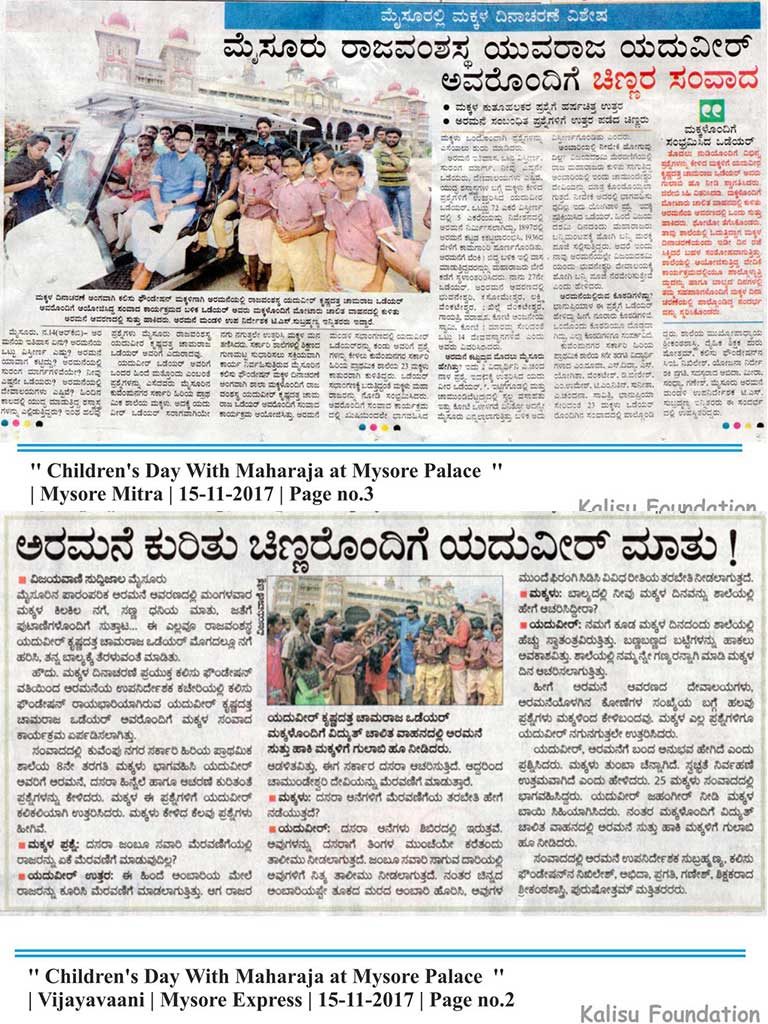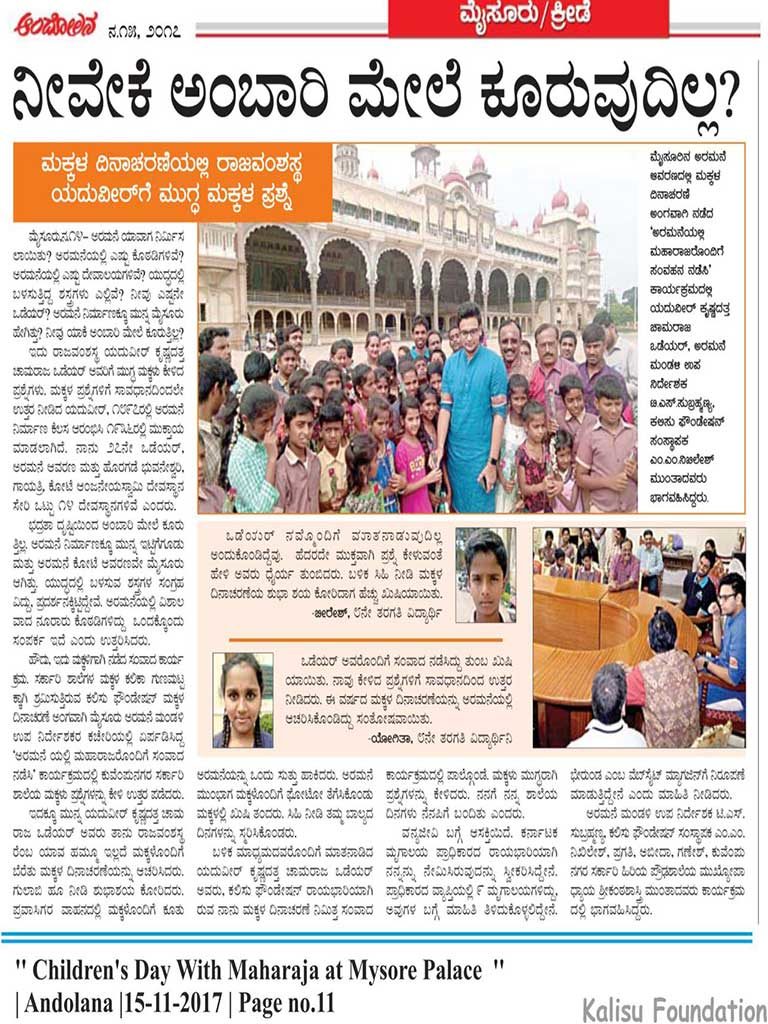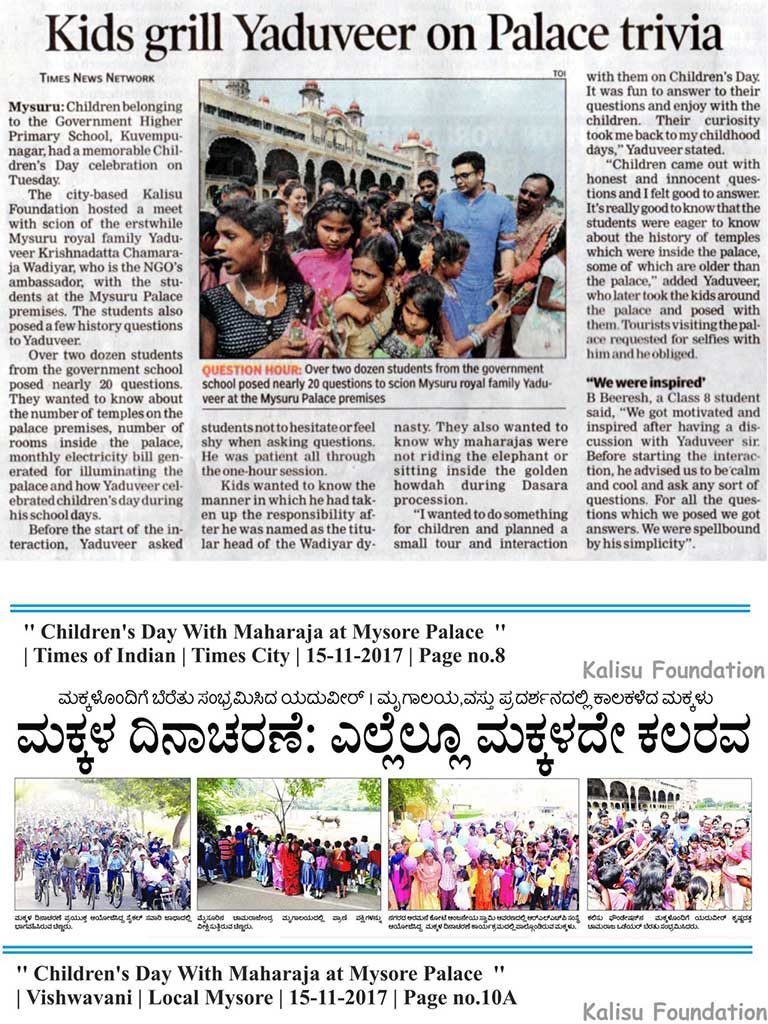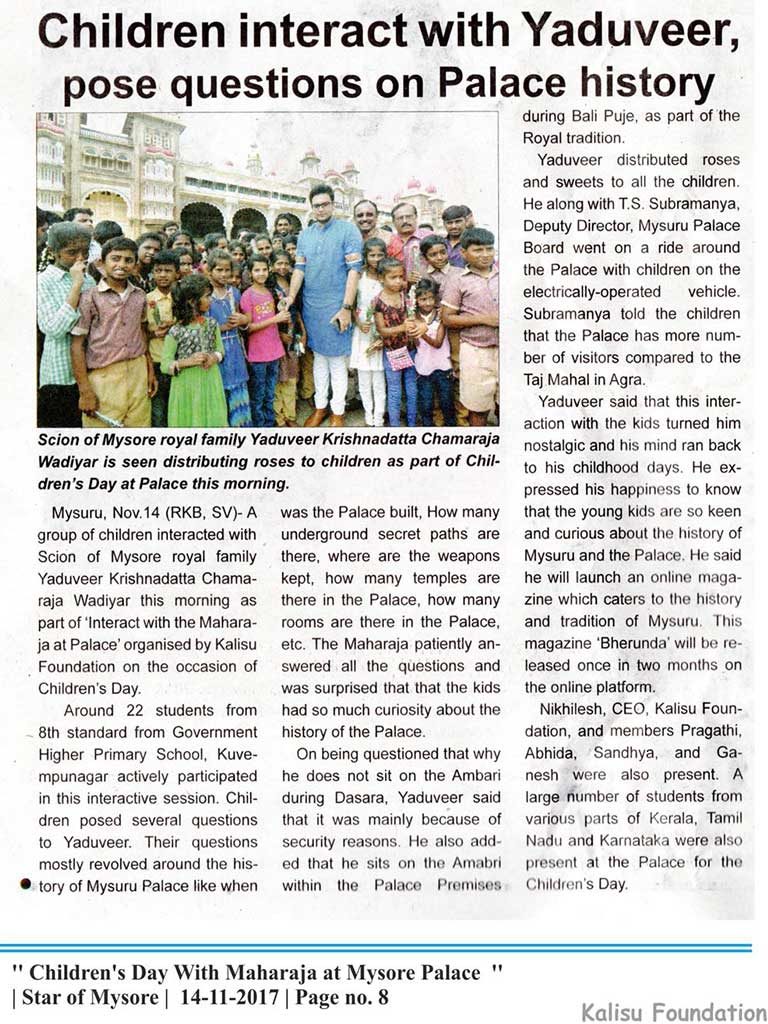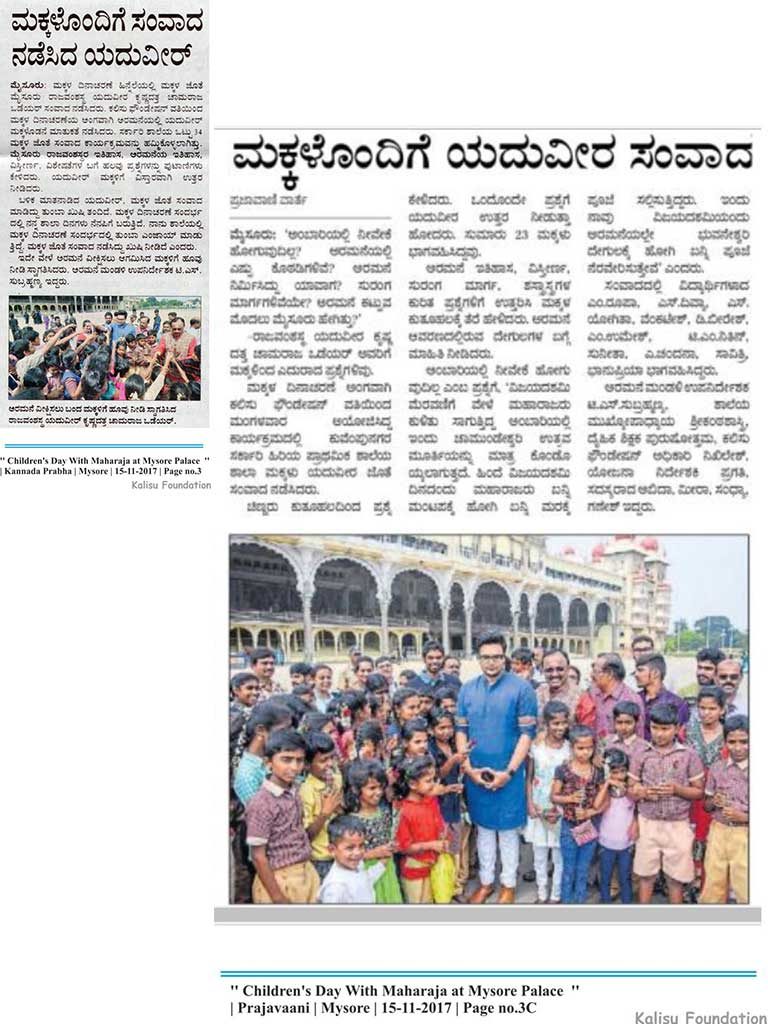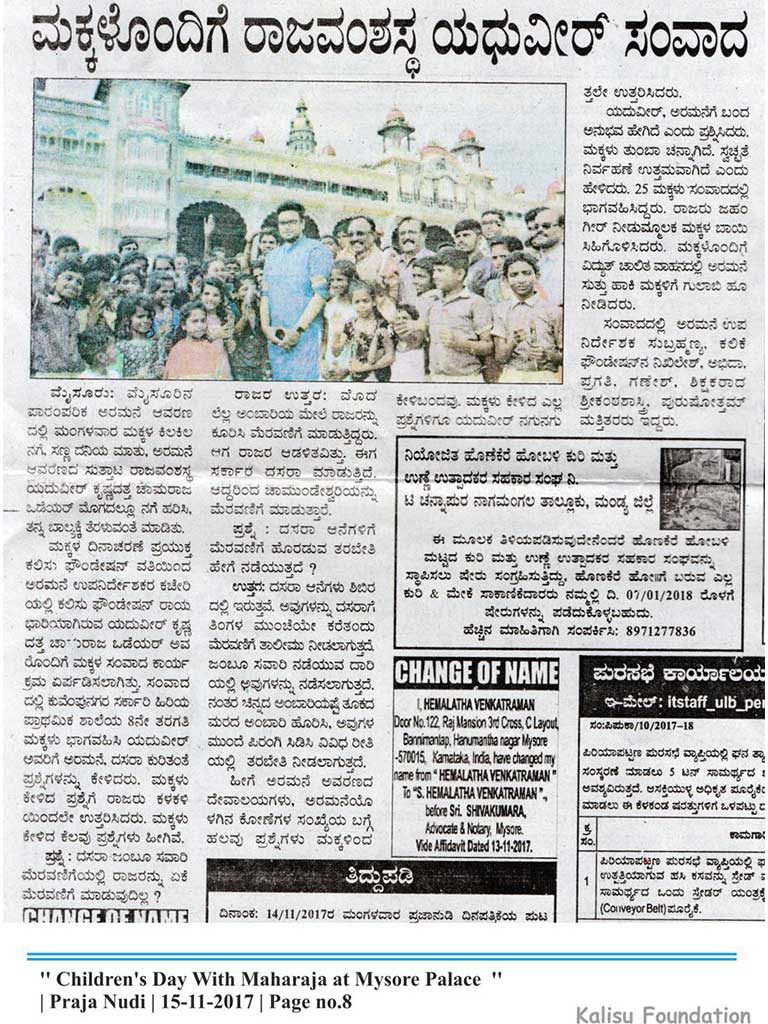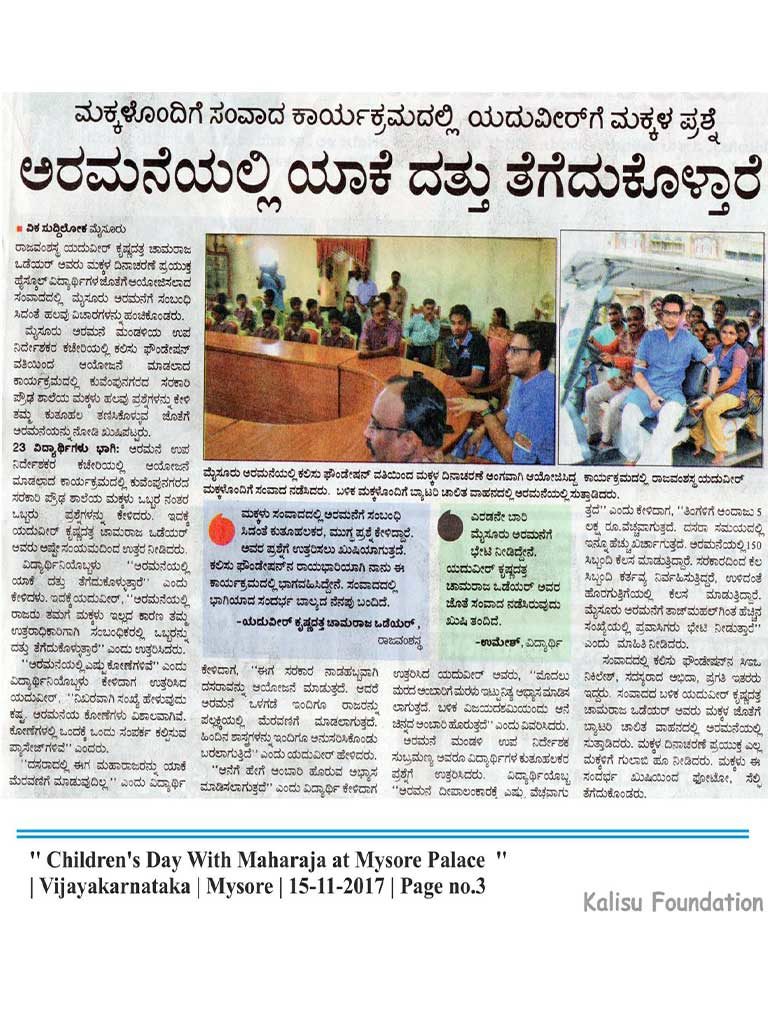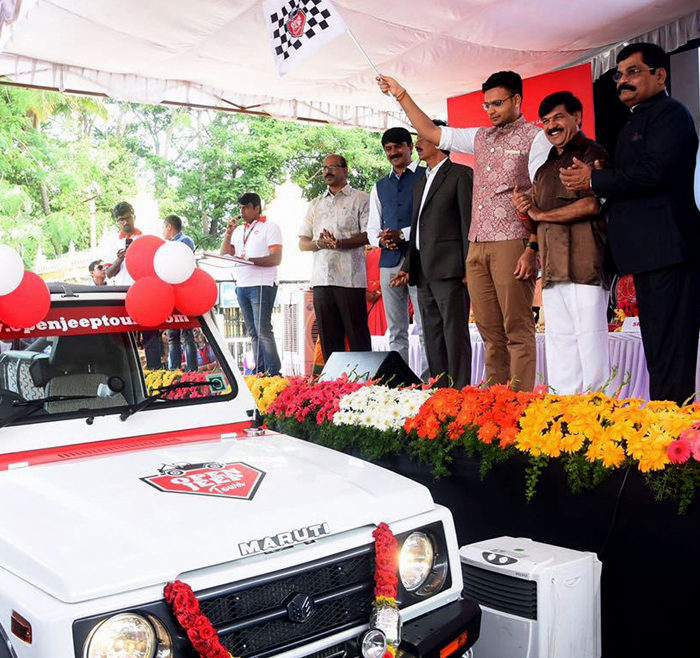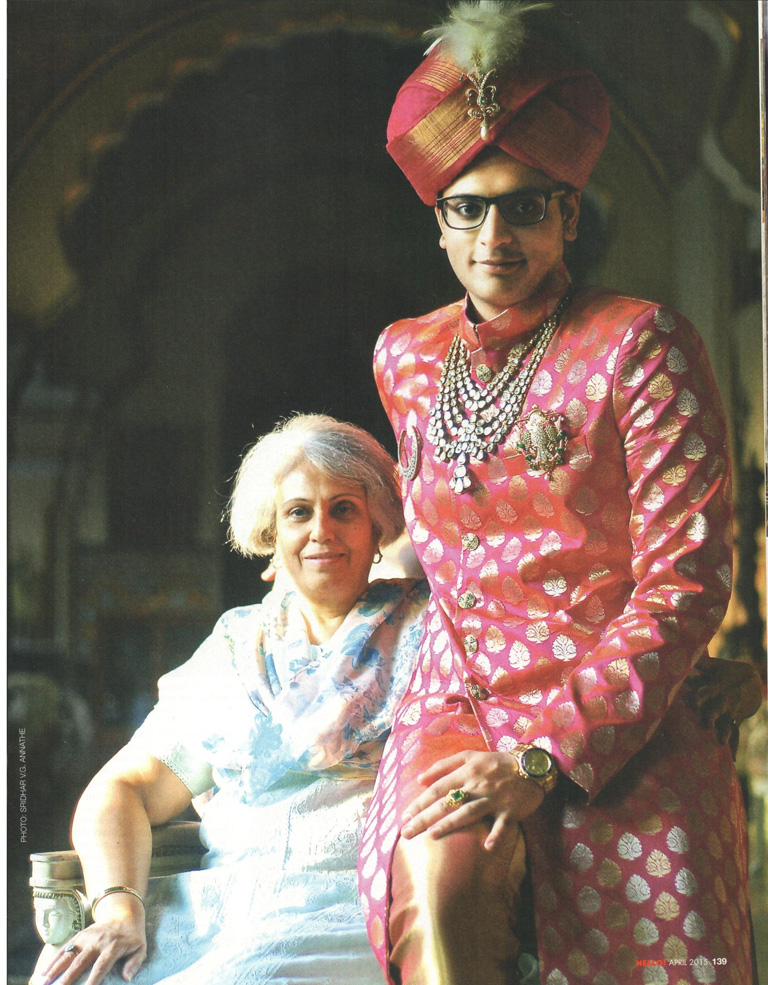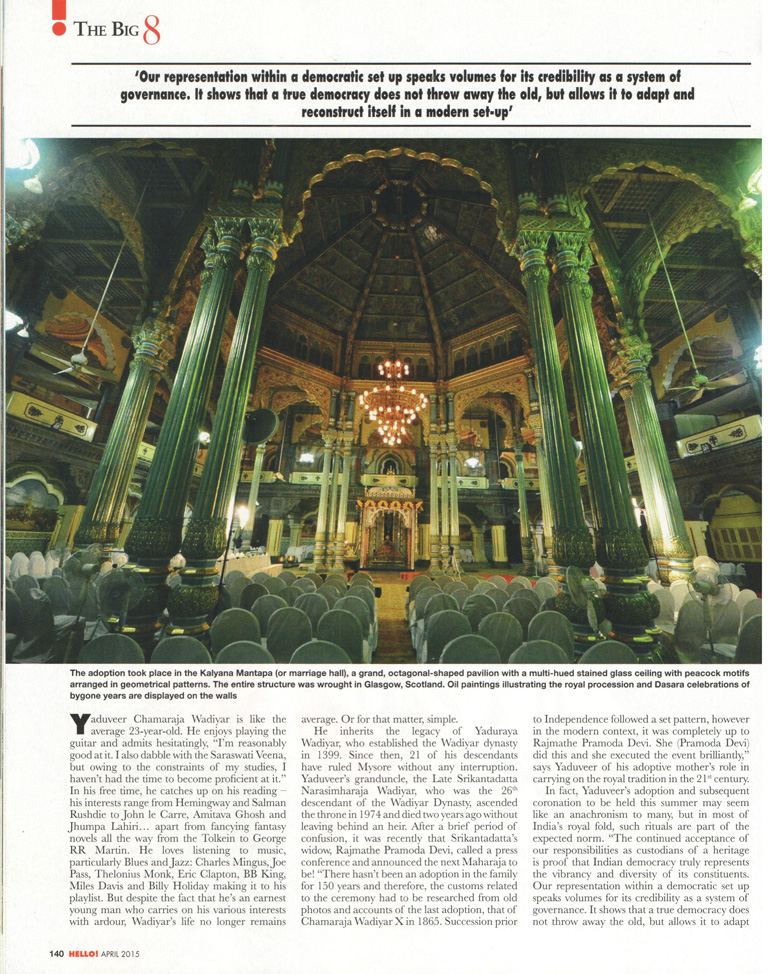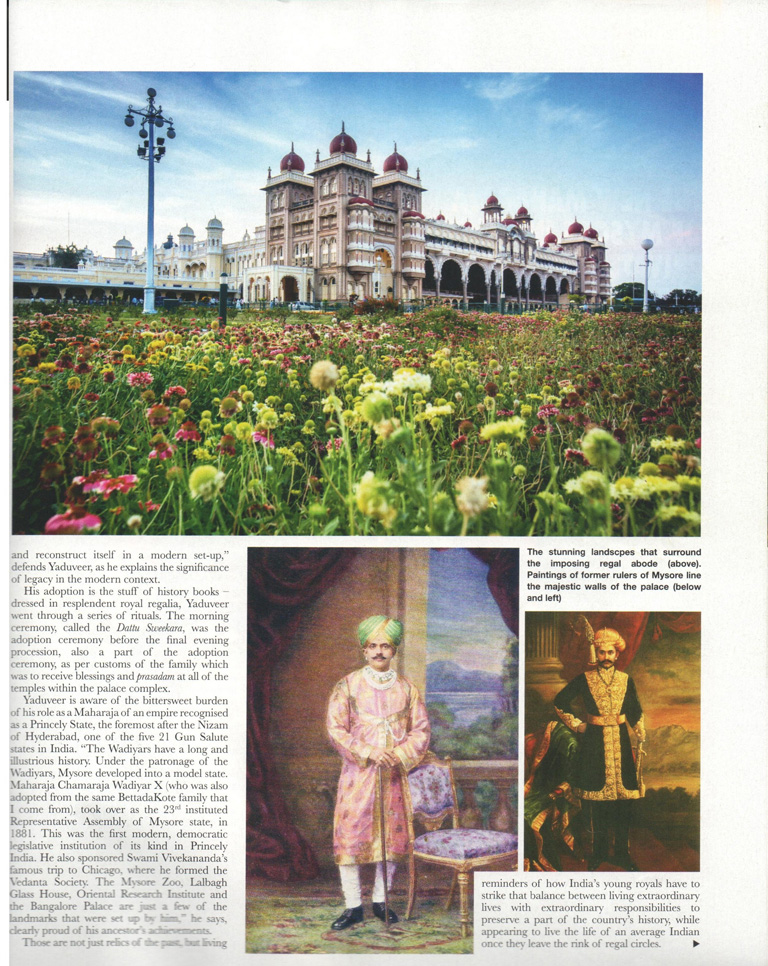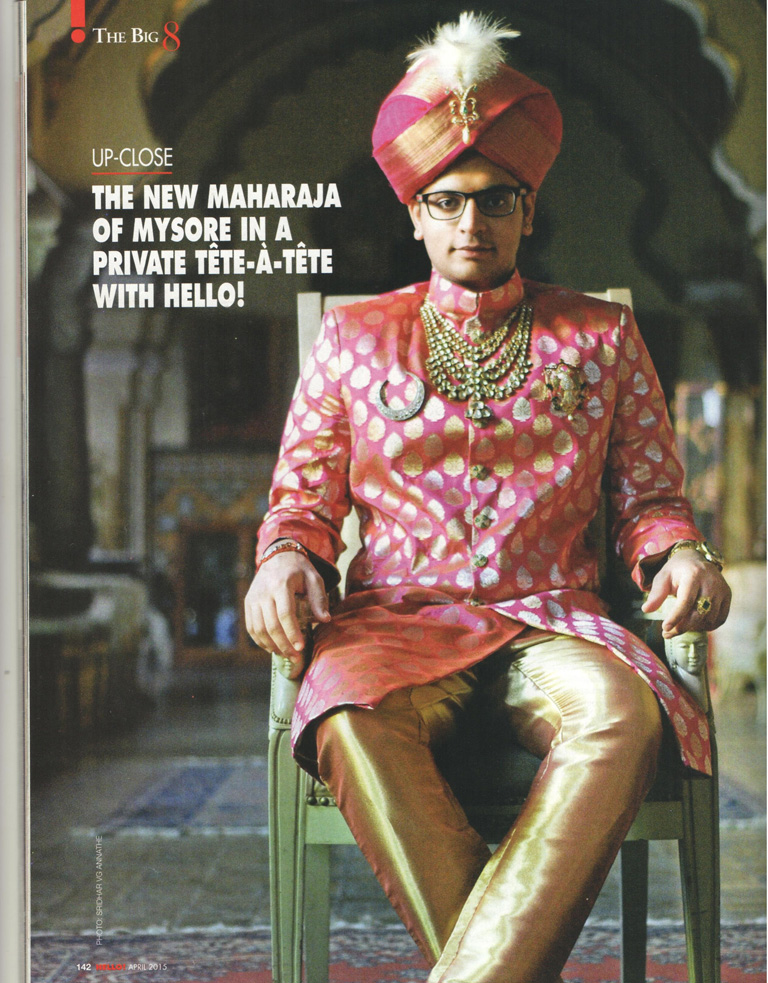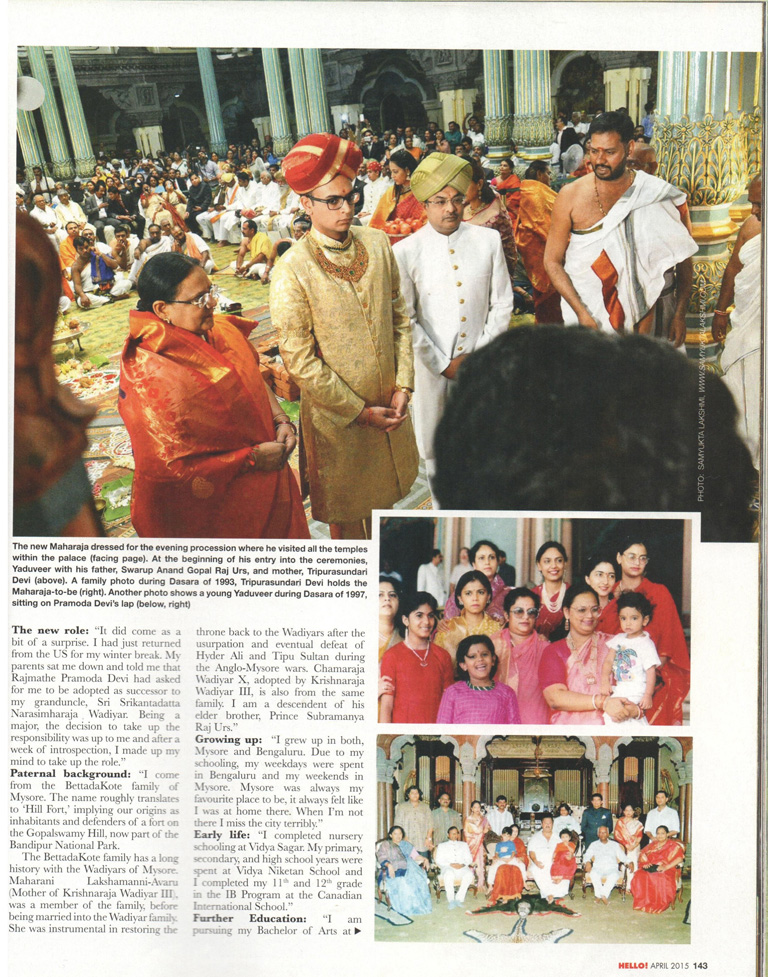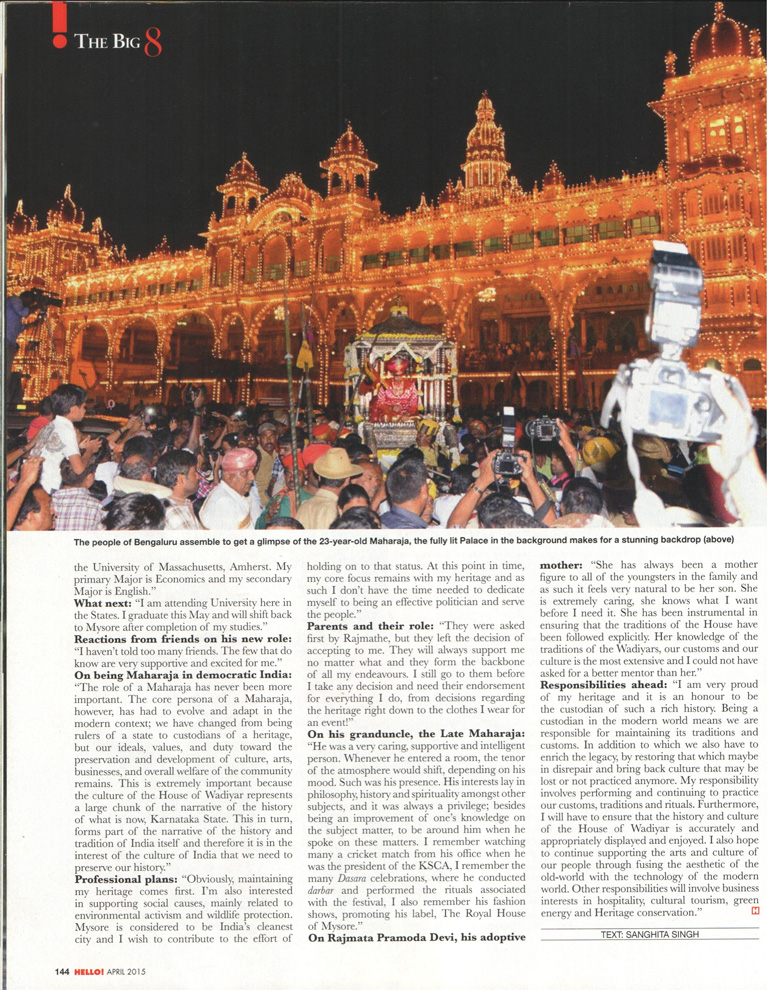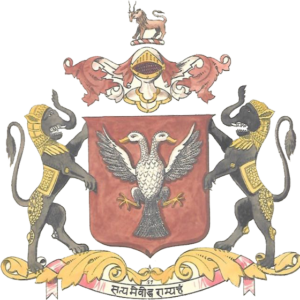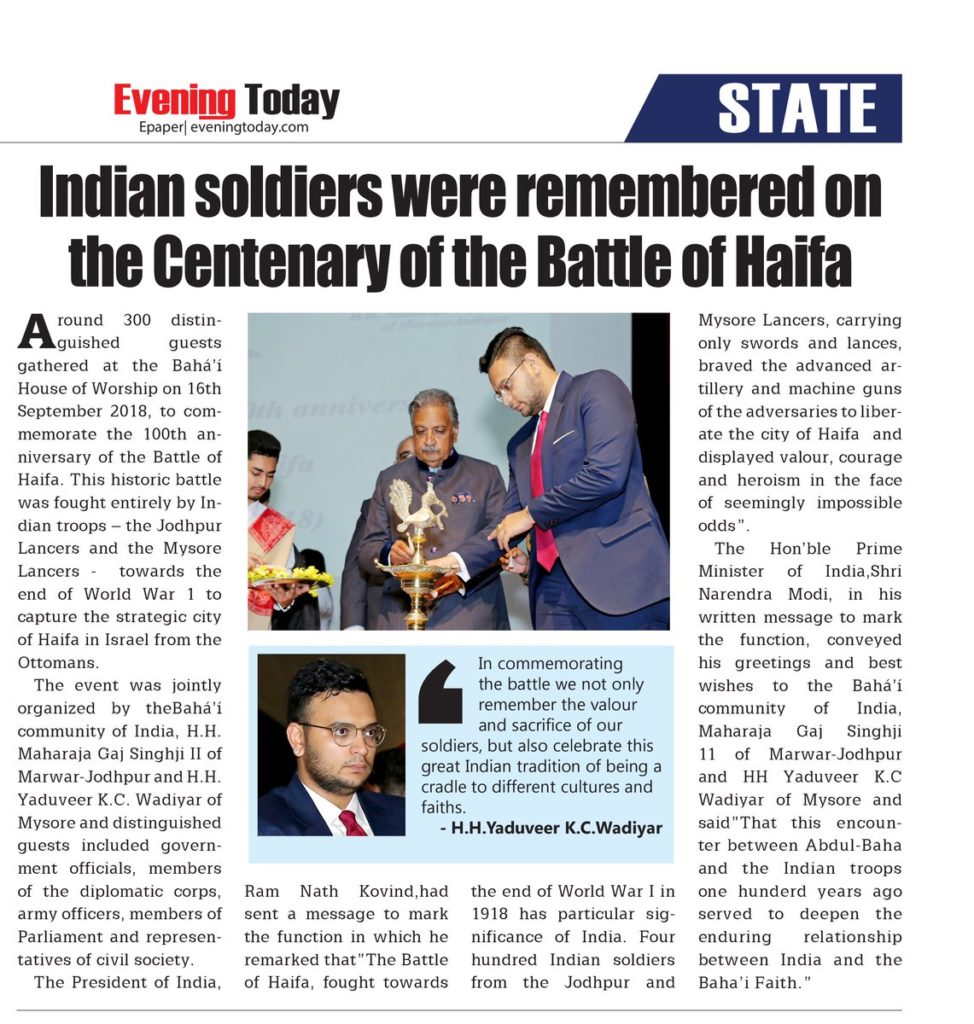
Last year the whole of Mysuru had come alive much before Dasara celebrations. The reason was the royal wedding that was taking place in the Mysore Palace after 40 years. The five-day wedding was a sight to behold as the young couple Yaduveer Krishnadatta Chamaraja Wadiyar and Trishikha Kumari Singh (now Trishikha Devi Wadiyar) tied the knot. Now almost a year later everyone is curious to know how the couple has coped up with the pressures of carrying on the royal legacy.
Senior Journalist N. Niranjan Nikam sat down with Yaduveer and Trishikha who spoke about their new life in the Palace.
Star of Mysore (SOM): It is more than seven months since both of you came together as man and wife. Is the honeymoon still on?
Trishikha Devi Wadiyar: The first year is always special. Ma (Pramoda Devi Wadiyar) has been very kind and has taught me all the rituals and ancient traditions of Mysore Royal family. Now, I am learning more from Yaduveer, and learning together makes it even more special.
Yaduveer: It’s a magical time. We have a lot of fun together, and we try to give ourselves personal time as much as possible. It is a dual life we are living which is the key to how we live here. Ma has always guided us and we are adjusting well. Even as children, we have watched and imbibed certain traditions unique to the Royal families.
SOM: Yaudveer, you are the titular head of the 600-year-old Wadiyar dynasty. Your mother Rajamatha Pramoda Devi Wadiyar decided to continue the tradition against all odds and anointed you as the Maharaja. How has the going been so far?
Yaduveer: In short, it is very good. It is quite a transformation. Firstly, I wanted to learn everything in order to continue the tradition, and for the most part I’ve imbibed the framework. I have done it because it is my duty to do so. It has been a beautiful two years and I have no regrets.
SOM: Now, you are living in one of the most beautiful Palaces in the world. How has the adjustment to this huge space been like?
Yaduveer: As a child it used to be wonderful. But now that we are settling down here it’s very different in the sense that in the Palace there are a number of ‘Thotti Manes.’ Each Thotti Mane is different. One is for food, the other is for the office, then there is the residential part and you are constantly moving between them. It was very difficult to figure out initially. But now I have got the flow of rooms in the Palace. Also, I love seeing the Palace illumination, it never fails to bedazzle me.
Trishikha chips in and exclaims, Mysore Palace is beyond magnificent. Every day you get to experience something different.
SOM: Trishikha, your father, Harshavardhan Singh said yours was an arranged marriage. How much have you fallen in love with Yaduveer by now?
Trishikha: (Heartily laughs). I have fallen in love head over heels definitely. He is a wonderful man with the most clear heart. I am glad that I am happily married to him.
Yaduveer: We have both known each other as children. Our families always met at parties. My mother and her mother have known each other very well. Before marriage, we spent a lot of time together.
SOM: You both are of the same age?
Yaduveer: Yes, I am slightly older by a few months. When we got married, I had turned 24 but Trishikha was still 23, just like Ma and late Dad who were also of the same age.
SOM: Both of you, it is said, are an intellectual match and you read a lot of books. The fascinating history of Wadiyars itself is a great study. Have you both embarked on this study?
Trishikha: Yes, of course we have, it is like reading an Encyclopaedia.
Yaduveer: We also read the history of other States and compare it with ours. A lot of it has also been romanticised. Hayavadana Rao’s ‘History of Mysore’ chronicling the Wadiyar dynasty is something I am fond of reading, which of course talks about our dynasty from 1399 to 1799.
Trishikha: I enjoy reading up on history as well. Other times my husband keeps telling me many anecdotal stories about Wadiyars which is not there in the books and it is fascinating to listen.
Yaduveer: We have a text on Wadiyars written by a Japanese lady named Aya Ikegame titled ‘Princely India Re-imagined – A Historical Anthropology of Mysore from 1799 to the Present’, which also throws light on a lot of history of our ancestors and speaks volumes about what the contributions of Wadiyars have been.
History doesn’t repeat itself, but it often rhymes. It is not my words, of course, but that of Mark Twain. The relevance of history depends on how you interpret it. For instance, if democracy doesn’t stay relevant, then another political landscape will come into play. That is the nature of life.
SOM: The Talakad curse has always been in the background of your dynasty. Have you wondered about it?
Yaduveer: With curses, a lot is subjective. To a great extent it is something people like to talk about just for the sake of intrigue. It’s part of the baggage. But I think we can be a little objective, the Doctrine of Lapse (enforced by Lord Dalhousie during the British rule) is one reason why this myth or legend has persisted. Many other princely families started emphasising on some sort of curse to ensure that adoption would continue their family line. There is a strong correlation between when these stories started to gain prominence and the time during which the Doctrine of Lapse was in effect. There have also been a number of marriages within the Ursu community and you yourself can do the biology and math there.
Trishikha: Goddess Chamundeshwari has been taking care of us and I am confident that She will take care of us in the future too (her thinking is in tune with her mother-in-law who also believes in the reigning deity of Mysuru).
Yaduveer: It is always gossip and much credence cannot be given to it as it sounds like old wives’ tale. We cannot answer it with a full stop.
SOM: Trishika your mother-in-law kept a very low profile and she is also a private person. But now circumstances have thrown her into public life. Since your exposure has been different would you like to be seen by your husband’s side all the time?
Trishikha: Of course, yes all the time. Ma is a good example for both of us. She has handled it with elegance. She has set up an effective template to be followed.
Yaduveer: In Indian shastras and philosophy, depending on the situation, a man and a woman’s status is interchanging. She is very good at certain things and I in certain others. Moreover, each person is different. Our ability to complement each other is what makes us strong.
Trishikha: It is a balance between your strength and weakness. In the end we work as a team and both complement each other.
SOM: Grooming into politics, if it begins at a young age, should be good. The late Wadiyar and now Harshavardhan Singh, who is the Rajya Sabha MP, could be your inspiration. Are you both thinking along these lines?
Trishikha: (Instantly replies) I am definitely not interested.
Yaduveer: It is definitely in my field of vision. However, it is not a decision I take lightly. If I want to do it, I would like to do it because my service would benefit people of the city and State and that is the only reason I want to get into politics.
Politics has a bad name and hence we also need to improve its reputation. You need the right advisors and the right kind of people. I would be lying if I said I have not thought about it. It has multiple personas to it. That is what Ma does very well. She changes her persona depending on the situation. You have to imbibe all the idealism and then decide what you want to do. Too much of anything is not good.
SOM: The two of you and Pramoda Devi Wadiyar participated in the 125th anniversary of Chamarajpet, the first planned enclave of Bengaluru established by Chamaraja Wadiyar X in 1892. How did both of you feel to be a part of this history?
Trishikha: It was a great experience. It’s amazing to see the immense love people have for our family and the respect they have for our ancestors. You realise just how much Wadiyars have contributed. Everyone there was so welcoming and people were so sweet.
Yaduveer: Everyone focuses on what we have lost. No doubt we have lost a lot of material things. But the goodwill we have is absolutely incredible. You cannot quantify it. How much Chamaraja Wadiyar X did with the help of his able Dewan Seshadri Iyer. All of us from old Mysore are proud Kannadigas. But in a metropolitan city like Bangalore we could not believe that there were so many who gave us so much love and affection. It just reflects what our ancestors have done.
SOM: You both are looked up to as role models. Hence, you have to watch every step you take, every decision you make and the thoughts you express. How much of a challenge do you both feel it is?
(They get into a huddle and go on to answer.)
Yaduveer: We both look forward to carrying on the 600-year-old Wadiyar dynasty’s traditions and following it comes naturally to us. We try and commit to our rites and rituals fully and perform our pujas more or less every day.
Trishikha: I chant the Hanuman Chalisa every day. We both go to bed by 9.30 pm. Yadu gets up at 5 in the morning and does Surya Namaskara. I get up at 7, and do yoga.
SOM: In the Palace it is strictly vegetarian isn’t it?
Trishikha: I am a vegetarian. I am a great animal lover and that is the reason I quit eating non-veg long time ago.
Yaduveer: I am also turning into a vegetarian more or less. Only when I go out I eat non-vegetarian food occasionally.
SOM: Do you look up to Nalwadi Krishnaraja Wadiyar as your role model?
Yaduveer: He is probably India’s greatest statesman. He had welfare of every person in his mind. He lived by ‘The Dharma’ of a ruler and devoted himself completely to work for the development of the State of Mysore. His stamp is everywhere. He always felt his State is great and his Palace is the greatest. If at all he had any vanity it was about his State and it being the foremost and a Model State.
SOM: Trishikha you have done your post-graduation in Economics. Are you planning to do your Ph.D? Yaduveer, you have a degree in Economics and English literature in your BA. Would you like to do your post-graduation?
Trishikha: I am really looking forward to doing Ph.D and Yadu has always motivated me to pursue higher learning.
Yaduveer: I have to do my post-graduation, it is needed. May be I will do an MBA.
SOM: Would you like to study at Harvard as you have done your graduation from Boston, Massachusetts?
Yaduveer: Obviously. That is the place to be. People aspire to be there.
Both Yaduveer and Trishikha came across as being very articulate and confident. They both see their Royal responsibilities as a privilege and not a burden. That is what will make them successfully carry on the Wadiyar legacy.
– An Article By THE STAR OF MYSORE
Mysuru: To attract visitors during Dasara festivities, ‘Open Jeep Tour’ was launched by Yaduveer Krishnadatta Chamaraja Wadiyar yesterday.
The tour enables a visitor to take an enchanting jeep tour when the city comes alive with pomp and revelry.
They will also get a chance to learn more about the illustrious tradition of Mysuru and its significance in the cultural history of the State.
Speaking on the occasion, Yaduveer said that in every corner of Mysuru there is a story. The Open Jeep Tour will help the visitors get an in-depth knowledge and story of the city.
“Let this initiative capitalise on the potential of Mysuru as a tourism centre. I am happy at the launch of such tours in Mysuru and hope that the visitors will have a memorable experience during their city sojourn.”
Former Minister and BJP leader S.A. Ramdas, MLA Vasu, Mysuru Travels Association President B.S. Prashanth and others were present during the launch.
The tour is operational twice a day and throughout the year and two scheduled trips per day will be conducted, each for two hours. The schedule tours are arranged as per the group requirement. Each jeep can accommodate a maximum of six travellers and the starting point is Lalitha Mahal Palace Hotel and culminates at Mysore Palace.
The tour will cover all heritage destinations like Lalitha Mahal Palace, Administrative Training Institute, Chamundi Hill View Points, Mysore Race Course, Government Guest House, Wellington House, Clock Tower, Freemasons Club, Town Hall, Gandhi Square, Devaraja Market, Dufferin Clock Tower, K.R. Circle, Lansdowne Building, Mysuru City Corporation, Gun House and Jayamarthanda Gate of Mysore Palace.
An Artical from THE STAR OF MYSORE
The Wadiyars had one of the longest reigns in India and the royal family, led by a 25-year-old, still plays a big role in society
When Mysuru celebrates Dasara, the world watches in awe. The erstwhile princely state has a long tradition—more than 400 years—of celebrating the festival with grandeur. The Mysore Palace hosts a durbar attended by the royal family, special invitees and the masses. The festivities include a ceremonial military parade, colourful rituals at temples, performance by the palace band and a procession with the idol of Goddess Chamundeshwari atop a royal elephant. The palace, lit up with about one lakh light bulbs, is a sight to behold. The celebration is a reminder that opulence and regality are not relegated to the pages of history. In Mysuru, they are still experienced as a shared and continued legacy of the royals and the commoners.
The 25-year-old, foreign-educated titular maharaja of Mysore, Yaduveer Krishnadatta Chamaraja Wadiyar, is set to conduct the Royal Dasara for the second time. “It is here the old meets the new, tradition blends with modernity,” says Yaduveer. “Dasara might be the window to the past for many. But for me, like most old Mysoreans, it is a continuation of a tradition.”
When Mysuru celebrates Dasara, the world watches in awe. The erstwhile princely state has a long tradition—more than 400 years—of celebrating the festival with grandeur. The Mysore Palace hosts a durbar attended by the royal family, special invitees and the masses. The festivities include a ceremonial military parade, colourful rituals at temples, performance by the palace band and a procession with the idol of Goddess Chamundeshwari atop a royal elephant. The palace, lit up with about one lakh light bulbs, is a sight to behold. The celebration is a reminder that opulence and regality are not relegated to the pages of history. In Mysuru, they are still experienced as a shared and continued legacy of the royals and the commoners.
The 25-year-old, foreign-educated titular maharaja of Mysore, Yaduveer Krishnadatta Chamaraja Wadiyar, is set to conduct the Royal Dasara for the second time. “It is here the old meets the new, tradition blends with modernity,” says Yaduveer. “Dasara might be the window to the past for many. But for me, like most old Mysoreans, it is a continuation of a tradition.”
The Wadiyar dynasty had one of the longest reigns in India. They ruled the kingdom of Mysore from 1399 to 1947 (including reigns as vassals) and are hailed as the architects of a model state. Maharaja Chamaraja Wadiyar X (1863-1894) instituted the Mysore Representative Assembly in 1881. This was the first democratic institution in the country. His successor, Maharaja Krishnaraja Wadiyar IV (1884-1940) rang in Mysore’s golden era. Mahatma Gandhi gave him the title Rajarishi (saintly king) and called the state Ram Rajya (ideal state). He was also one of the wealthiest kings in India. The last king of the Wadiyar dynasty—Maharaja Jayachamarajendra Wadiyar (1919-1974) ruled from 1940 until Indian independence in 1947 when he acceded his kingdom to the dominion of India. He continued as the maharaja until India became a republic in 1950.
The abolition of the privy purse in 1969 saw the royal family of Mysore suffer great financial stress owing to mounting arrears of wealth and income tax. Palace workers were retrenched and the upkeep of the estates became difficult. Subsequently, the royal family found itself mired in litigation to protect its estates.
Jayachamarajendra Wadiyar had transferred land around the Bangalore Palace to two private companies he floated to develop the palace into a luxury hotel. After his death, a civil suit had to be filed to retrieve the land. But in 1996, the Karnataka government passed a legislation to acquire the palace. The royal family went to court and eventually the Supreme Court stayed the acquisition and ordered status quo be maintained.
The state government took over a portion of the Mysore Palace for maintenance in 1976. In 1988, the family approached the High Court to claim it back, as the government which now earned lakhs through tourism at the palace refused to share revenue or settle the arrears. In 1997, the court ruled that the management of the palace be handed over to the royal family. However, the state passed the Mysore Palace Acquisition Act, 1998.
The friction with the government has been a bane for the royal family for a long time. But there is another curse—one where the lines between history and legend blur—that has plagued the Wadiyar family for much longer. This is the curse of Alamelamma. For almost 400 years, every alternate generation of the royal family has gone childless and is forced to adopt an heir.
Legend has it that after Raja Wadiyar I (1552-1617) captured a weakened Srirangapatna, Alamelamma, wife of the deposed ruler Tirumalaraja, uttered a curse which ended, “ …let the Mysore king not beget children”. A repentant king installed a statue of Alamelamma in the Mysore Palace and the royal couple continues to worship it to this day.
“The curse came into prominence when the Doctrine of Lapse came into effect, as it allowed only a biological heir to succeed,” says Yaduveer. “So, the curse gave you an excuse not to follow the doctrine. But it is also true alternate generations have not had children. So there is an irrational aspect, too, which I really cannot explain.” Yaduveer was adopted by Maharani Pramoda Devi in February 2015, more than a year after her husband and Maharaja Srikantadatta Narasimharaja Wadiyar died without naming a successor. His coronation took place on May 28, 2015.
The current titular head was born as Yaduveer Gopalraj Urs, to Swarup Anand Gopalaraj Urs and princess Tripurasundari Devi (daughter of princess Gayatri Devi). He married Trishika Kumari, daughter of Harshvardhan Singh and Maheshree Kumari of the Dungarpur royal family (Rajasthan) on June 27, 2016. The couple is expecting its first child.
Yaduveer went to the Vidya Niketan School and the Canadian International School, both in Bengaluru, before graduating from the University of Massachusetts, majoring in Economics and English.
“My [adoptee] father passed away when I was to begin my last semester in the US,” says Yaduveer. “Later, I was chosen to succeed him, which came as a surprise. I was looking at a career in sustainable energy and development, when the maharani told my mother about her plan to adopt me. Then, suddenly, I realised I was playing a small part in the larger narrative of the centuries-old Wadiyar dynasty.”
Recalling the sudden transition, Yaduveer says: “I studied for five years in the US. But the new role demanded a different form of education.” The transition was, however, smooth for his wife Trishika, he says: “My wife easily adopted to this [life], perhaps due to [her royal] family background.” Trishika studied in Baldwin’s college in Bengaluru and graduated from Boston University.
Being a royal also meant charting a unique journey, to represent a composite culture built over the centuries. “It was an awareness about our culture, which I thought I knew, but I did not,” says Yaduveer. “We are the spiritual and cultural successors to the Vijayanagara empire, which in turn was influenced by many other dynasties—Cholas, Pallavas, Chalukyas, Rashtrakootas. So, I tried to put our tradition and legacy in perspective.” He says that he is living and expressing an ancient message, ideal and symbolism, adding to it and passing it on to the next generation. “The idea that I am a small part of a larger narrative took me some time to comprehend.”
Yaduveer says the goodwill created by his ancestors motivates him to associate with the right causes, and explore ways to contribute.
“It is a democratic country and we have to stay relevant, carve our own path to work for the causes we believe in,” he says. “I am invited to perform special pujas as people believe it can end droughts. I oblige them, but I know we need to do much more than that, as droughts are a reflection of our lack of planning and commitment to conservation.”
His predecessor Srikantadatta Wadiyar, a two-time MP from Mysore, was a connoisseur of music, an ardent cricketer, fashion designer and promoter of Mysore silk (under the Royal Silks brand). Yaduveer is grooved into music. He wakes up to Indian classical music and also enjoys playing the guitar and his newfound love—the veena. He is also a passionate environmentalist.
“Axing of hundreds of trees for a steel flyover, the failing monsoon and dams going dry warn of an alarming future,” he says. “Global warming is a reality. Inspired by my younger sister, I grow organic vegetables. I noticed the Bangalore Palace had so much land and felt it was sinful not to grow plants.” He has taken to a my-garden-to-my-table approach.
Stressing on the need for sustainable development he says: “The maharajas illuminated the Mysore Palace as there was excess power. Today, we face power crisis. It is time to innovate and adopt greener technology. A fine example is the Chinnaswamy Stadium, which has tapped solar energy and is self-sustainable.” Yaduveer actively takes part in afforestation drives and seedball projects (where seeds with nutritive coating are dispersed across vacant lands for germination during monsoon).
His penchant for education drives him to the local government schools to volunteer as a teacher. The maharaja is engaged with Mysuru-based NGO Kalisu Foundation, which runs the Maharajarinda Kaliyiri (learn from the king) programme across 14 government schools.
“I was appalled at the state of elementary schools,” says Yaduveer. “It is not to do with funds, but the focus and motivation. Unless we catch the children’s attention, we cannot motivate them to learn. I am doing my bit by trying to inculcate students’ interest in learning. I conduct quiz on general knowledge, hygiene and conservation.”
He is also a fan of the Swachh Bharat initiative. “It is good to see policy and campaign built around Swachh Bharat,” he says. “But it is no time for complacency. The awareness about hazards of plastic and safe disposal of garbage should percolate to the classrooms. Political will is crucial to resolve many issues.”
Staying contemporary and relevant being the key, will he enter politics like his predecessor? He does not rule out the possibility. “I follow politics, though I avoid being opinionated in public,” he says. “Right now, I am focusing on things that demand my attention. My mother is handling the tougher part like litigations. I would like to lessen her burden.”
Like most royals now, this king has a palace but no kingdom. The royal family’s revenues come mainly from venues rented out for commercial activities. But Yaduveer says: “I am not the owner, only a custodian of this legacy, the royal estates and the goodwill of people.
